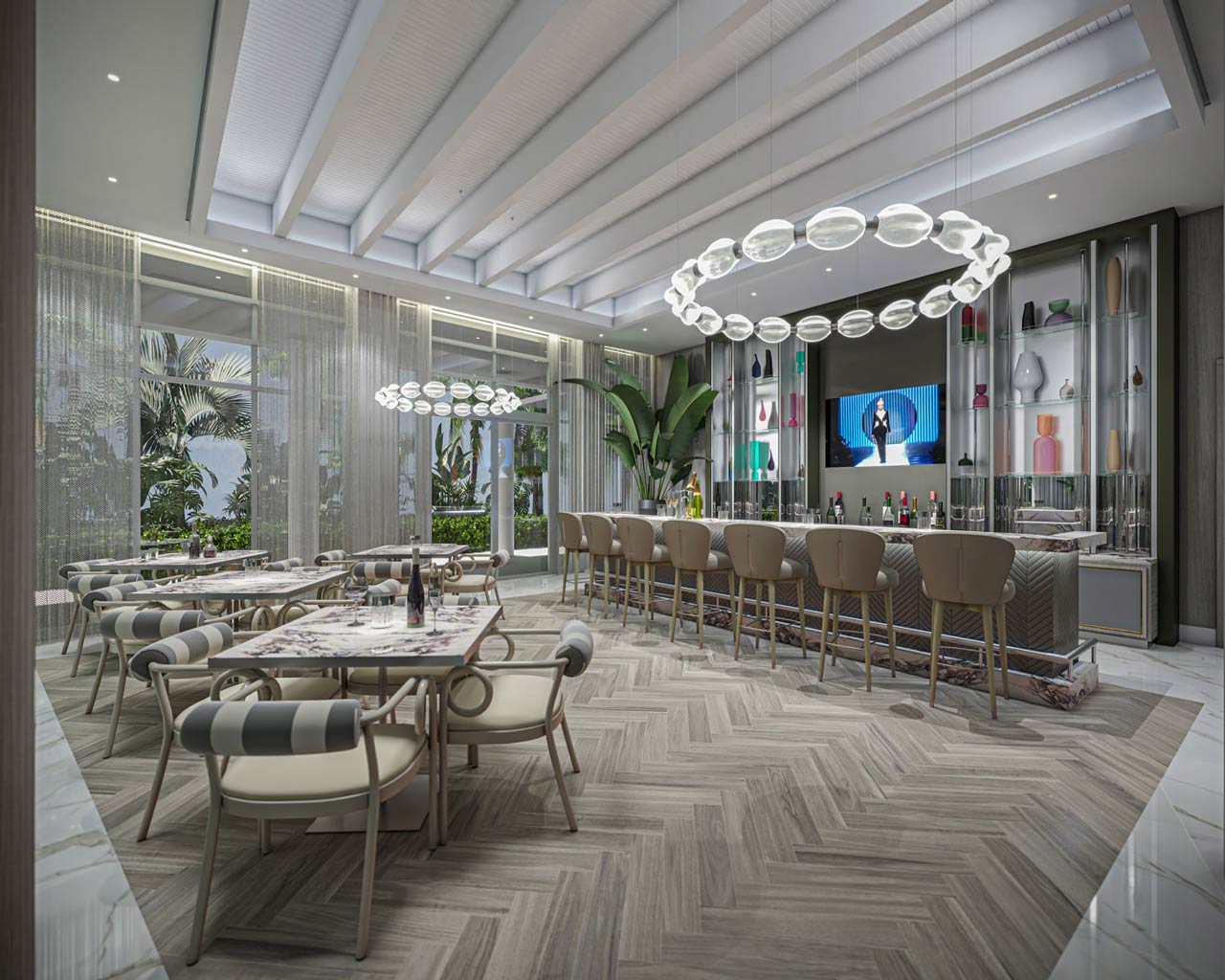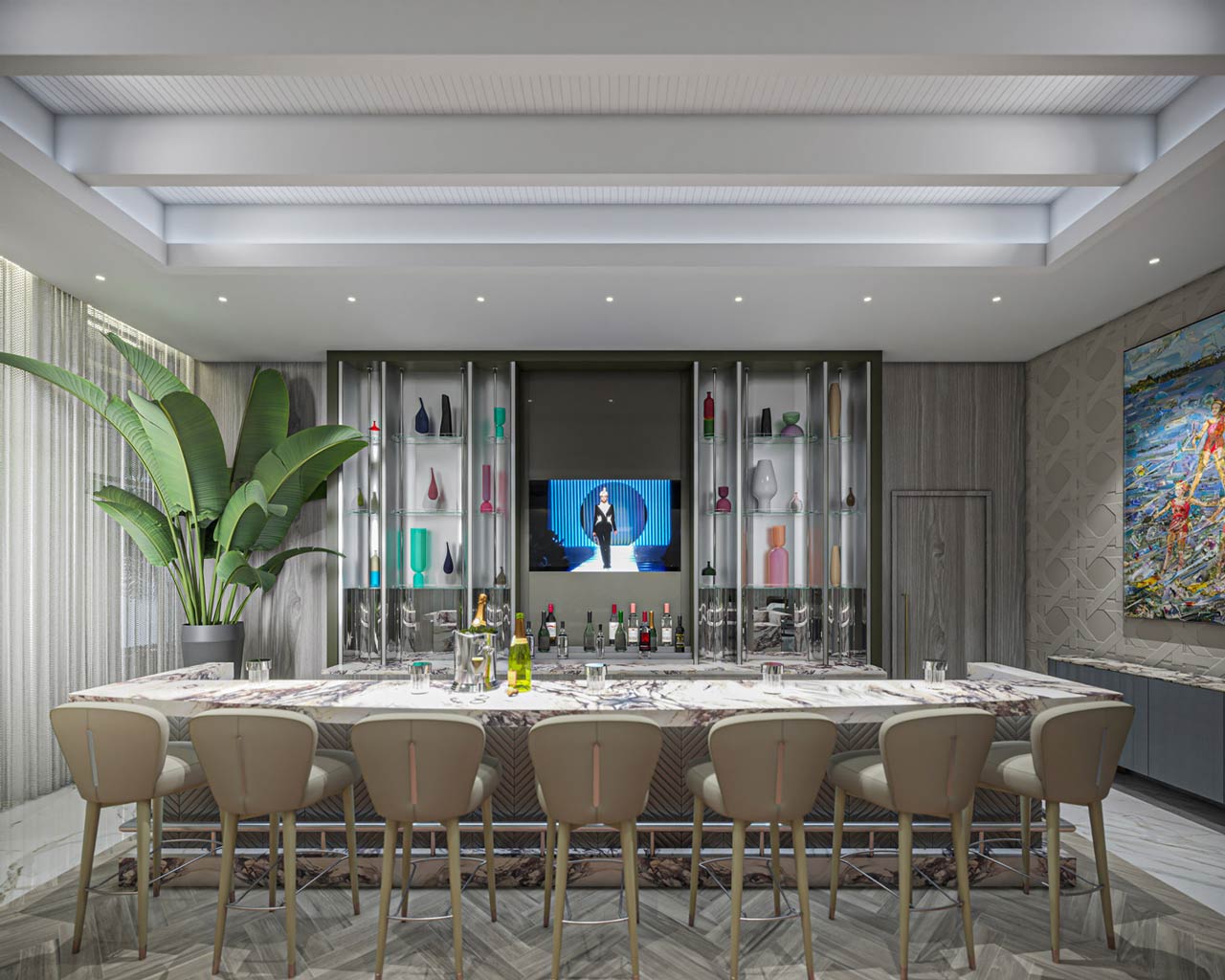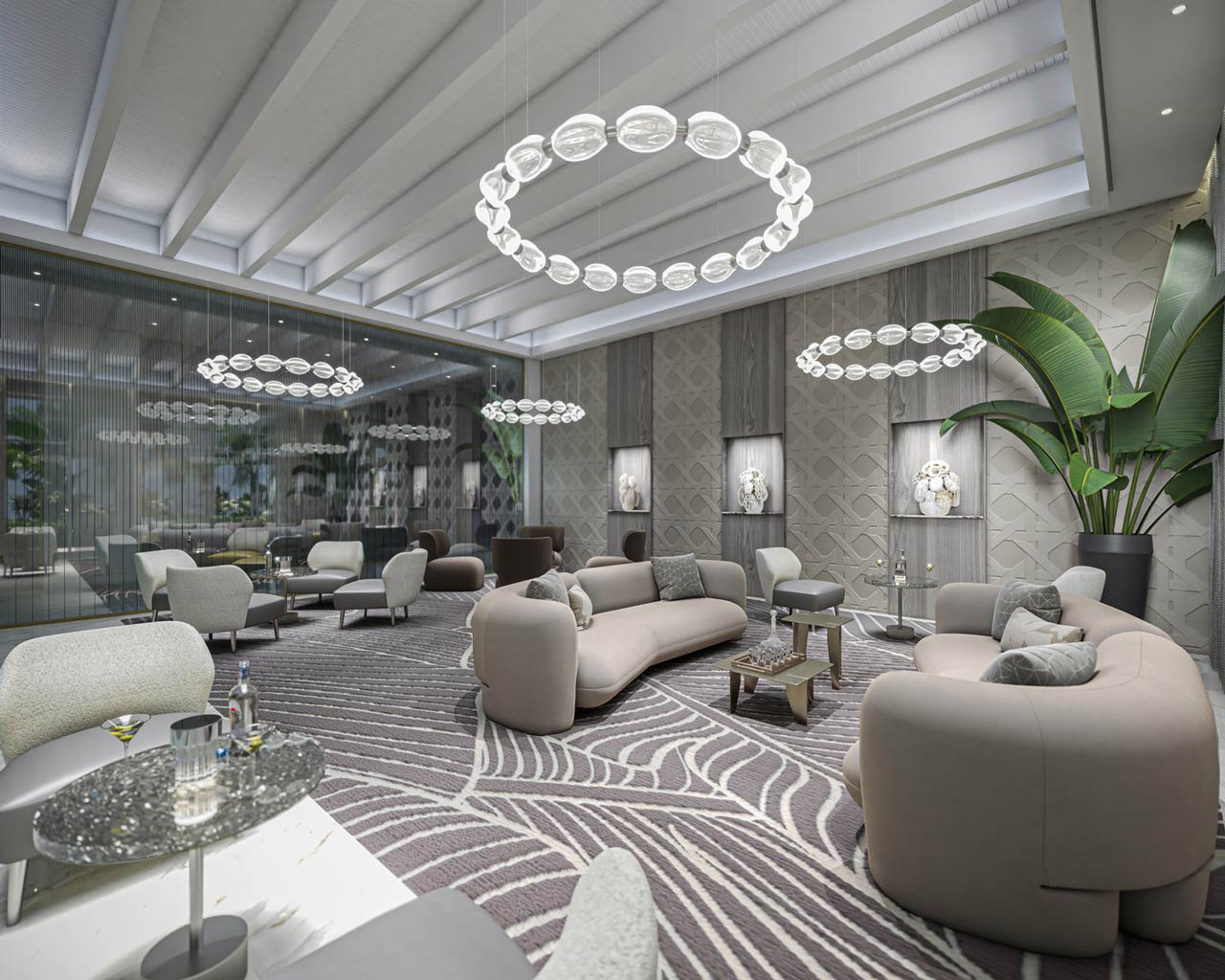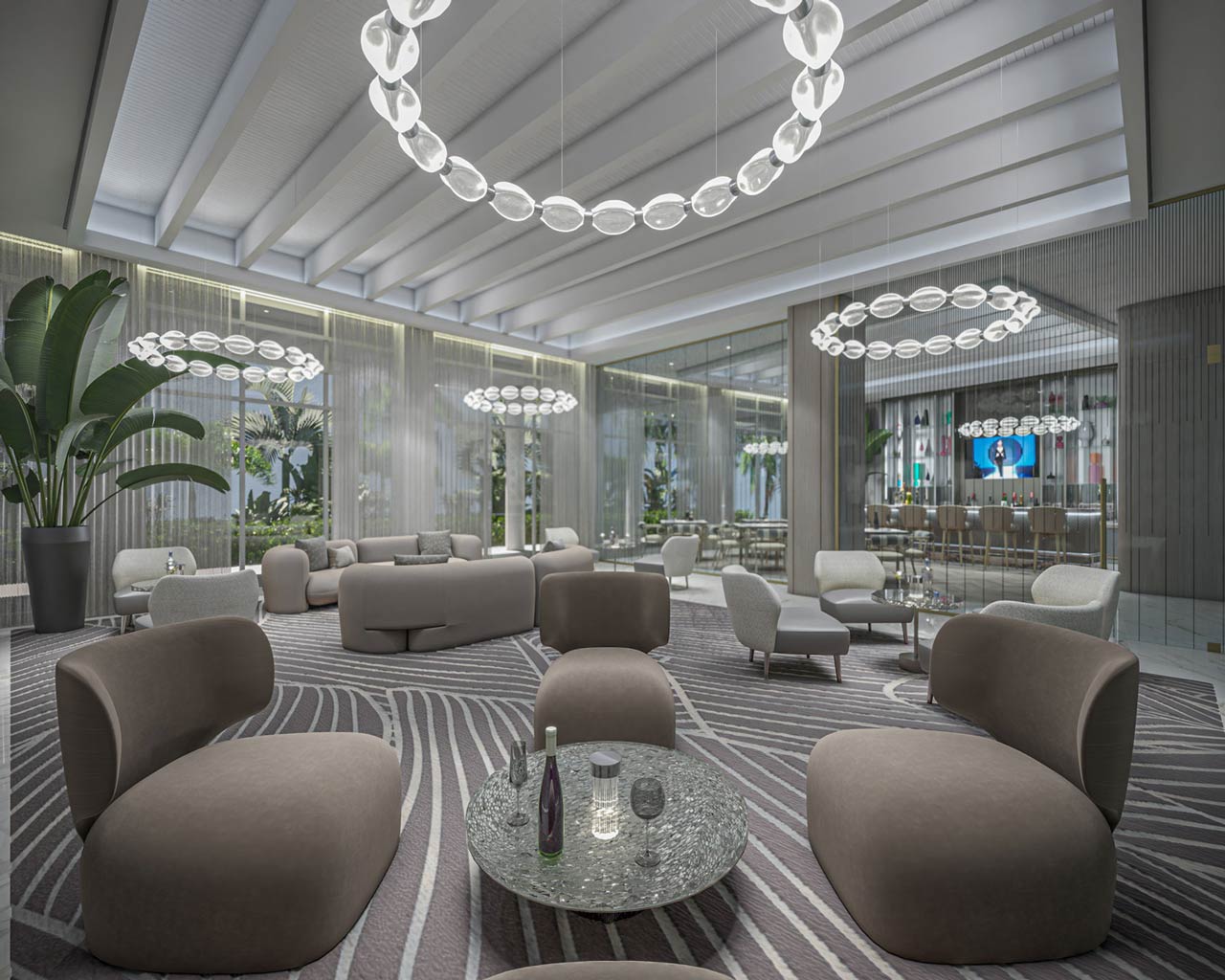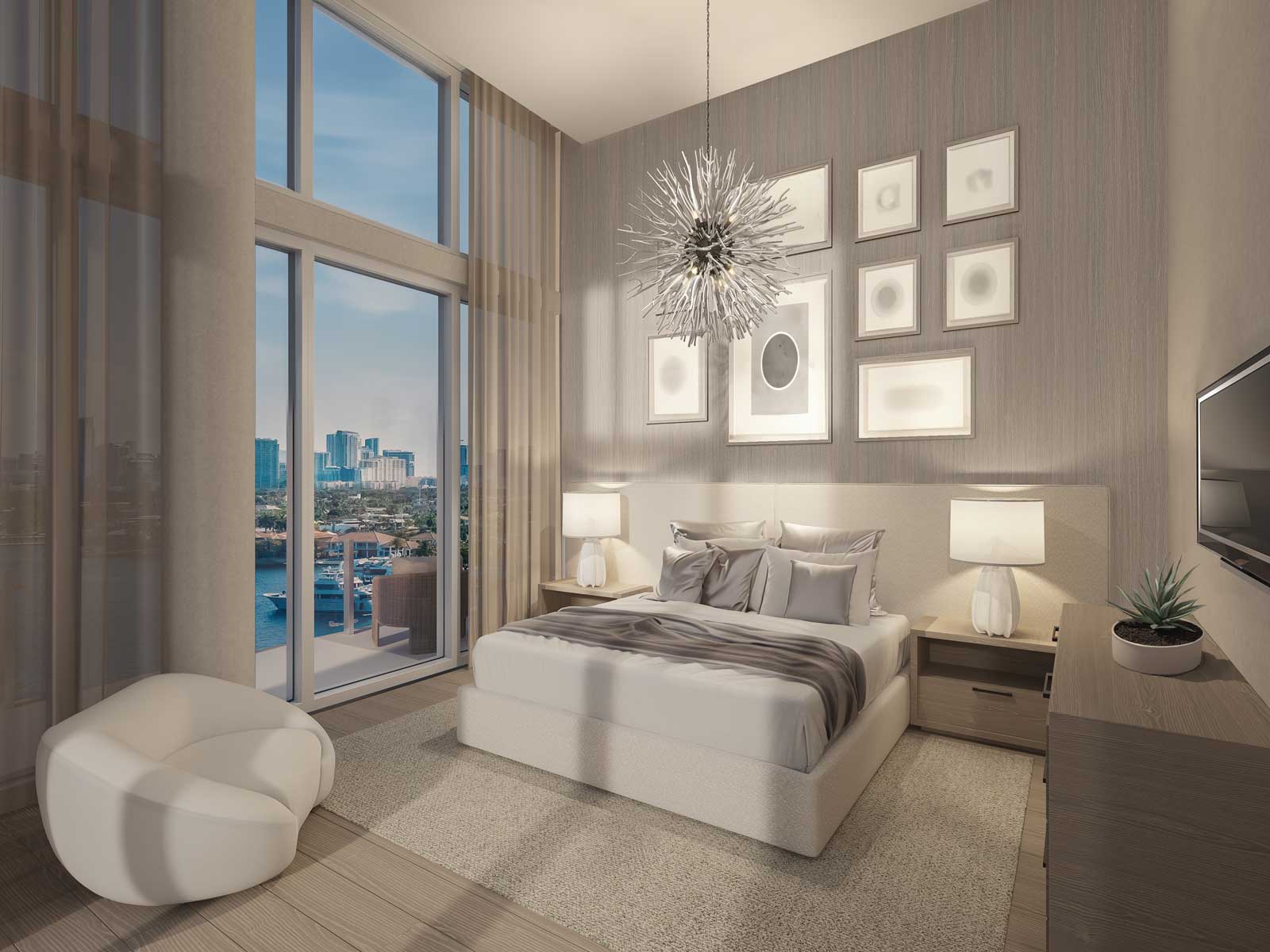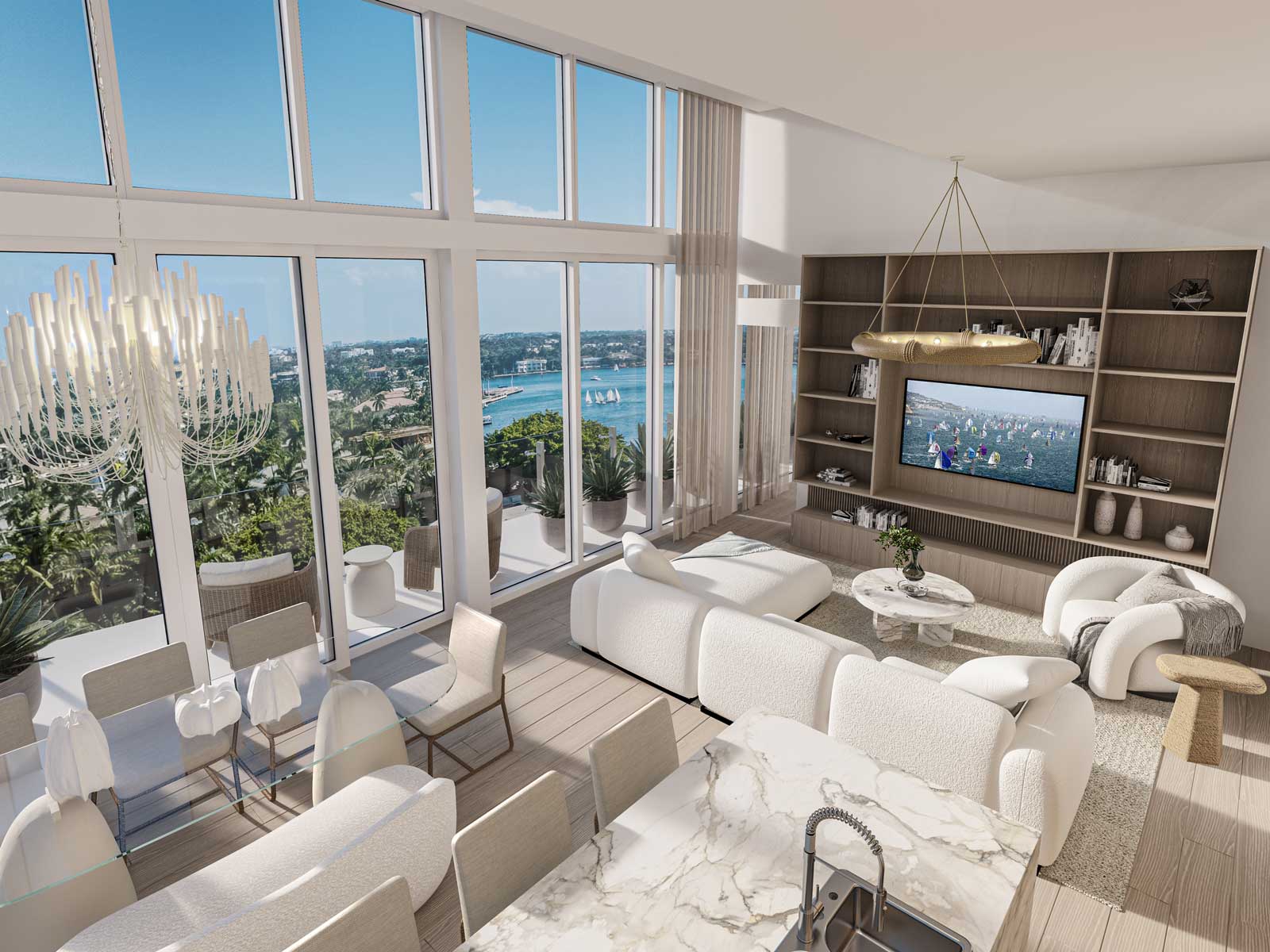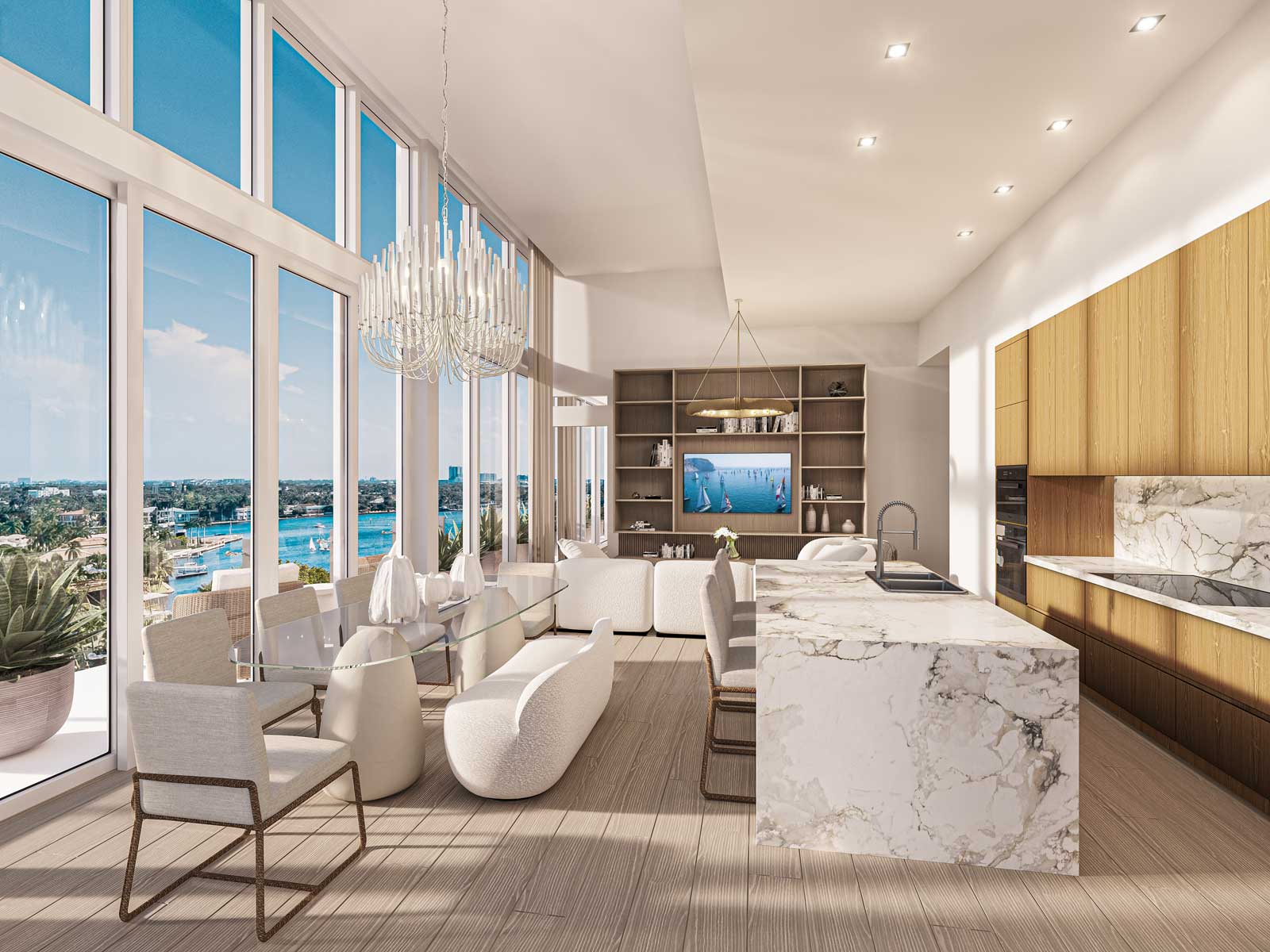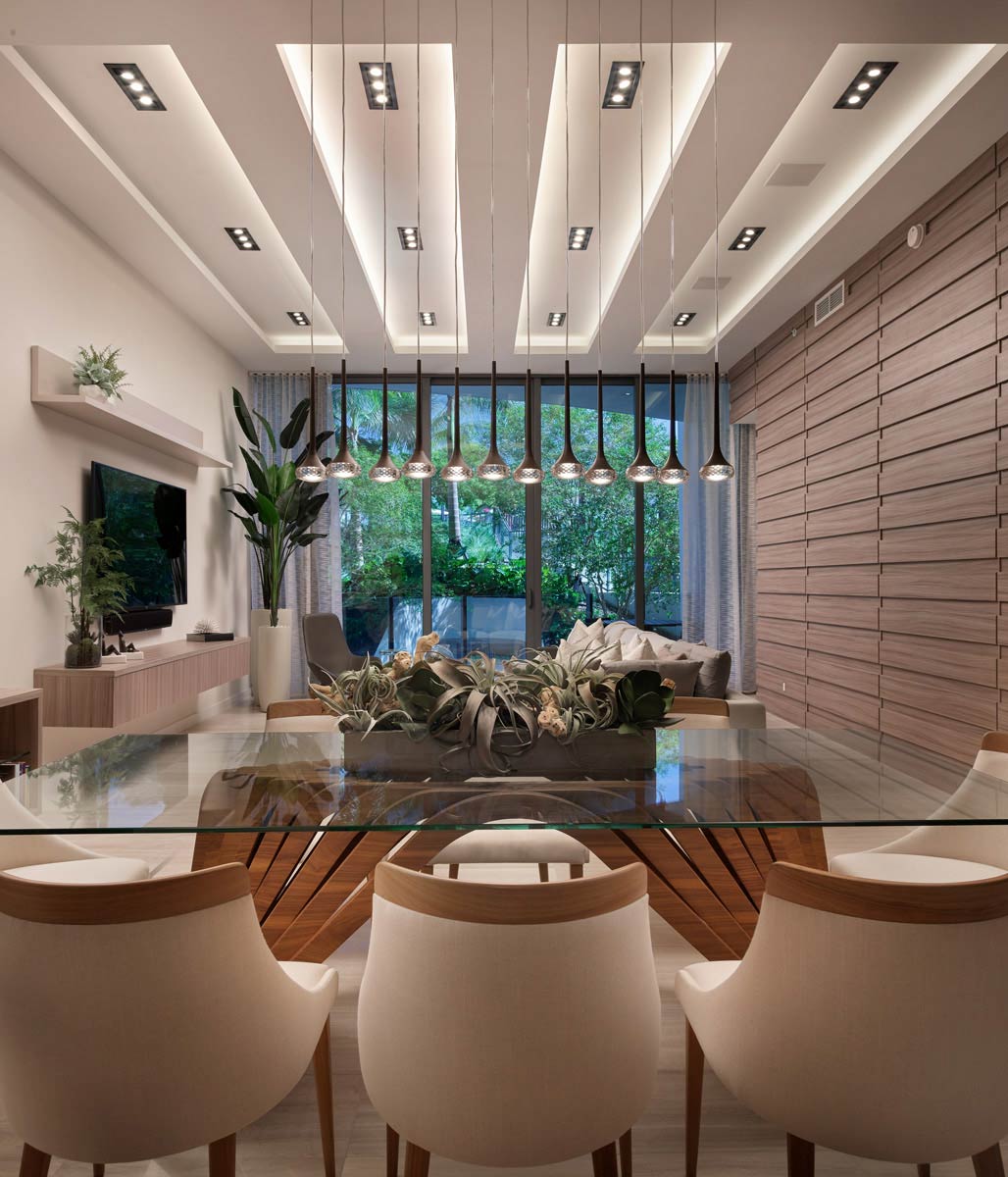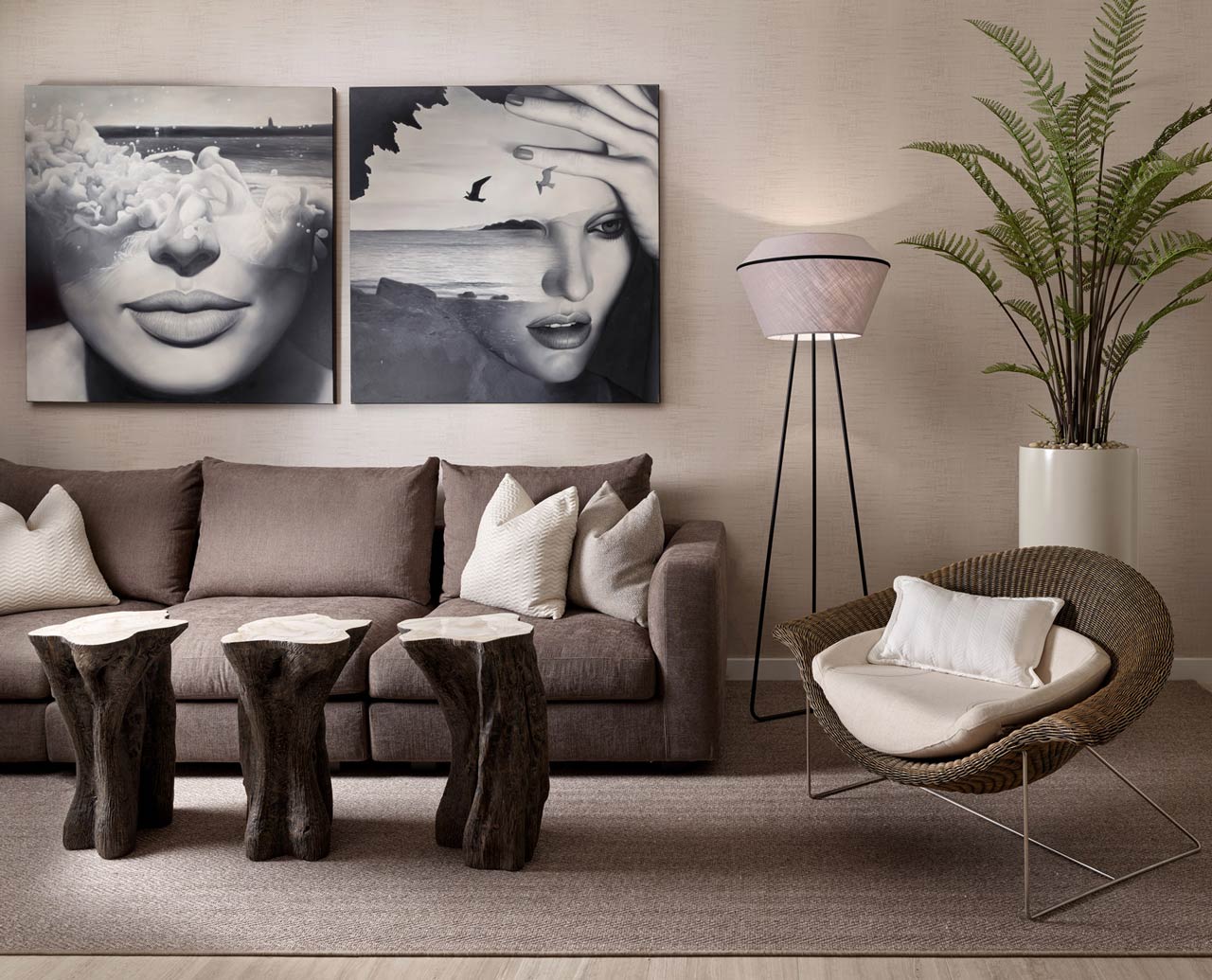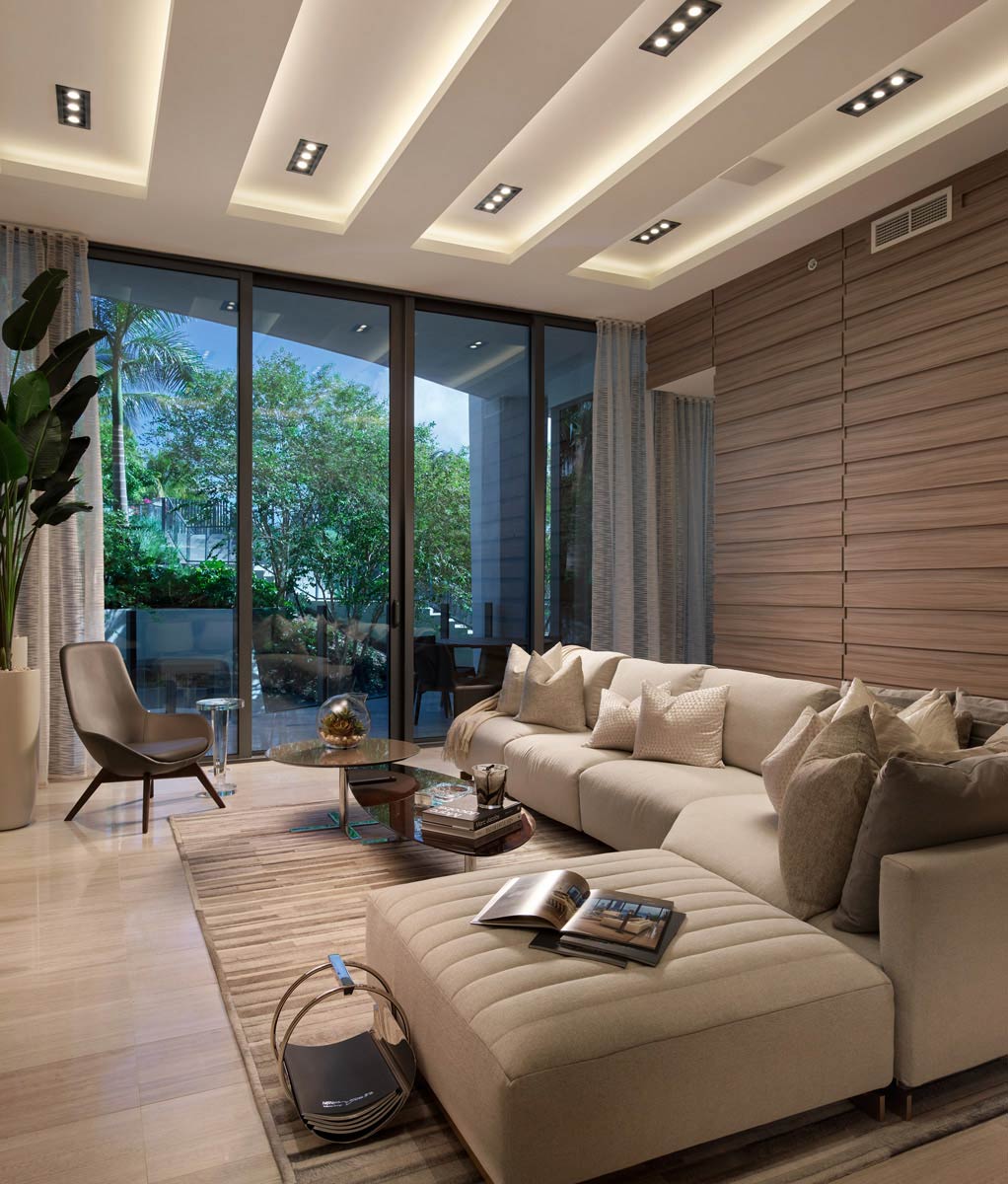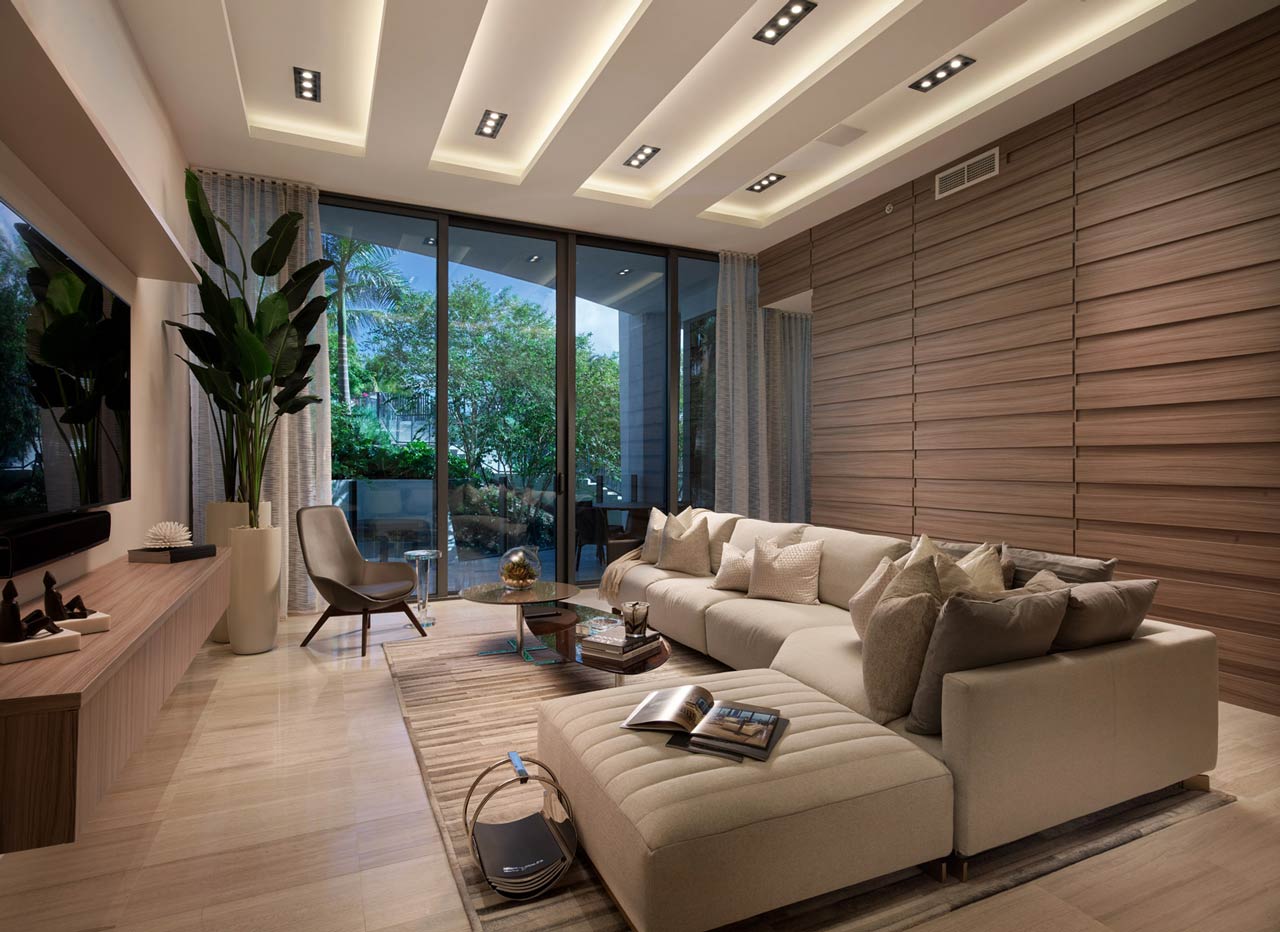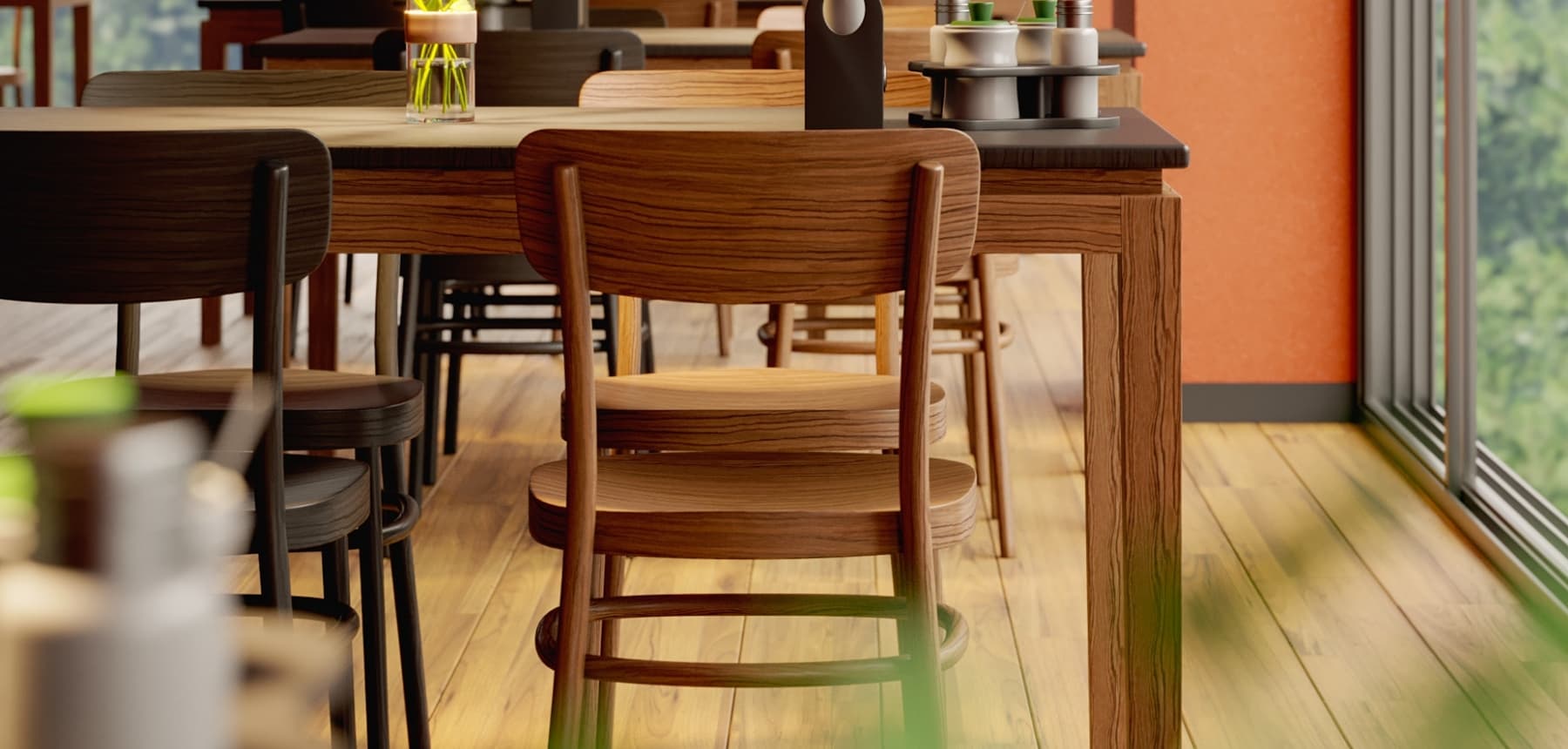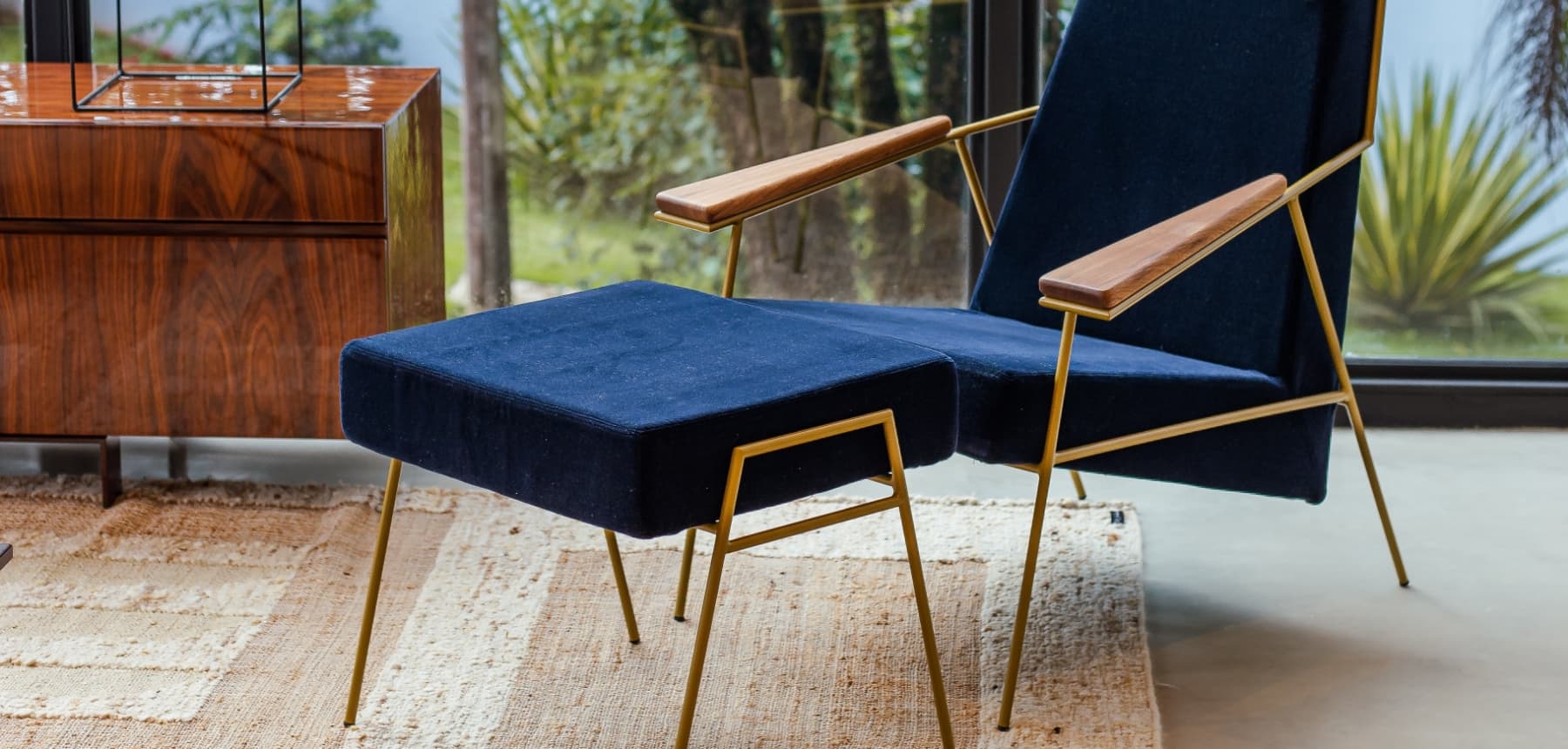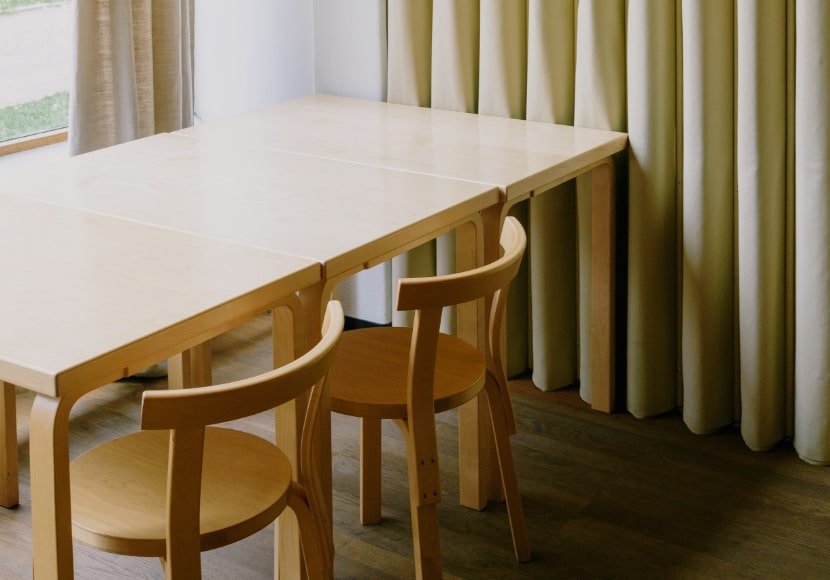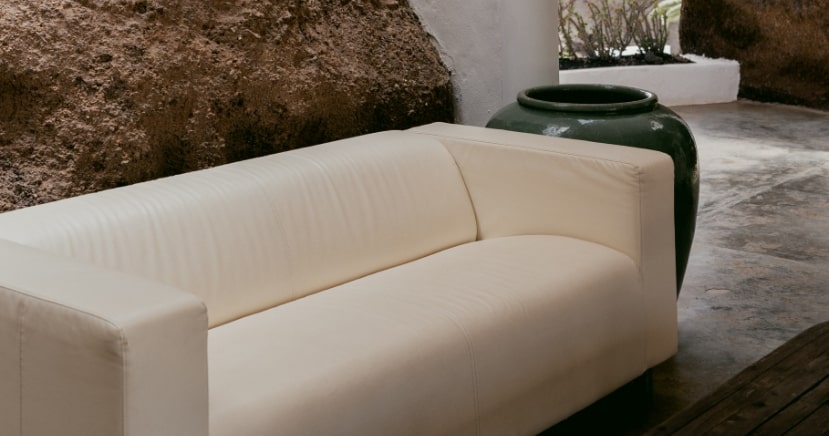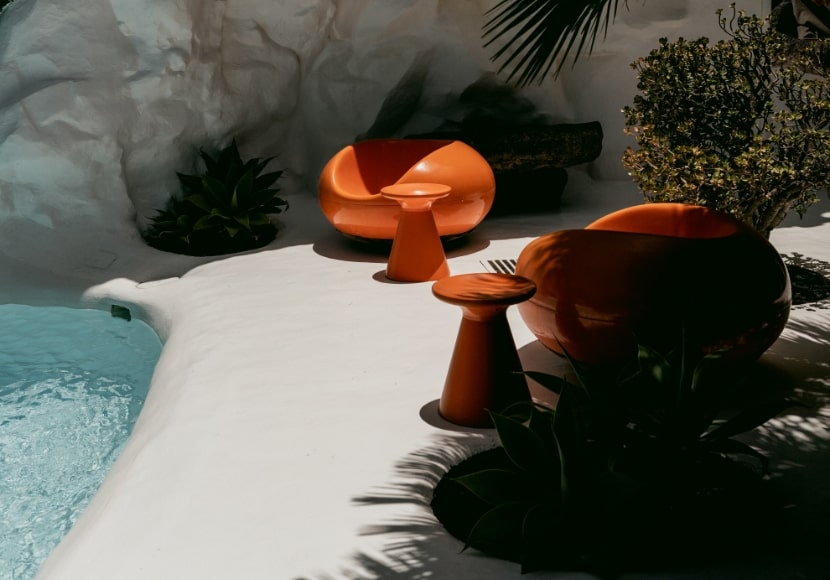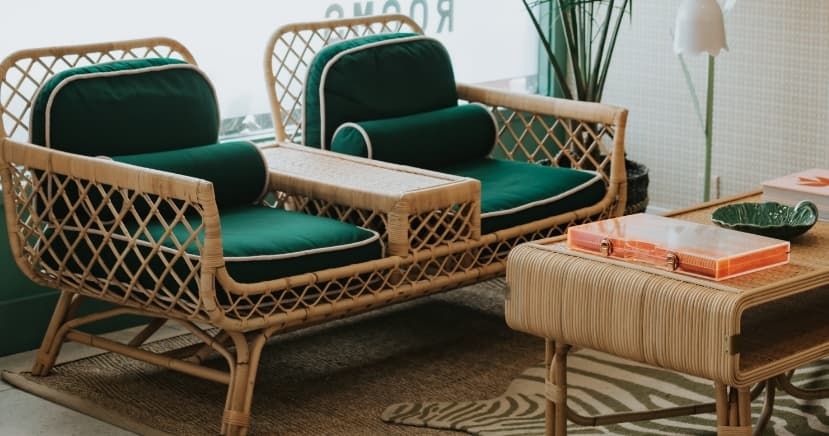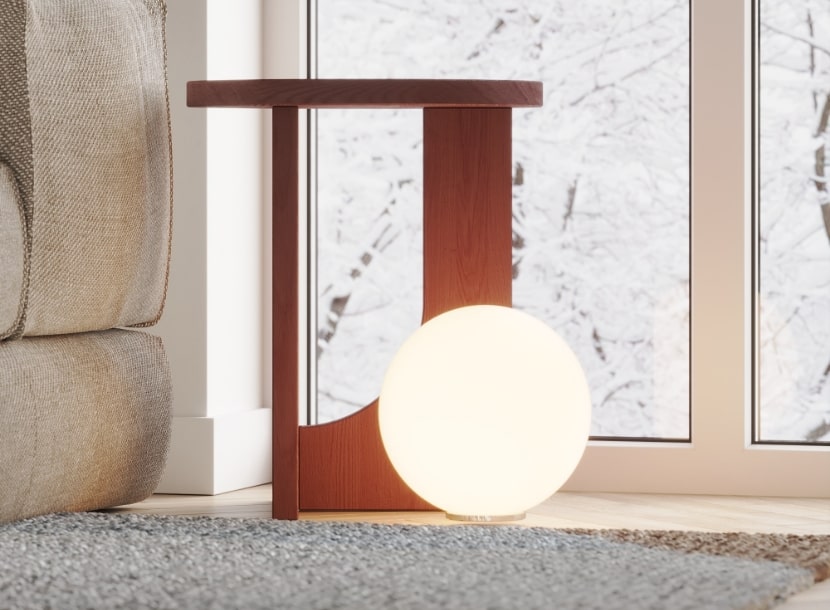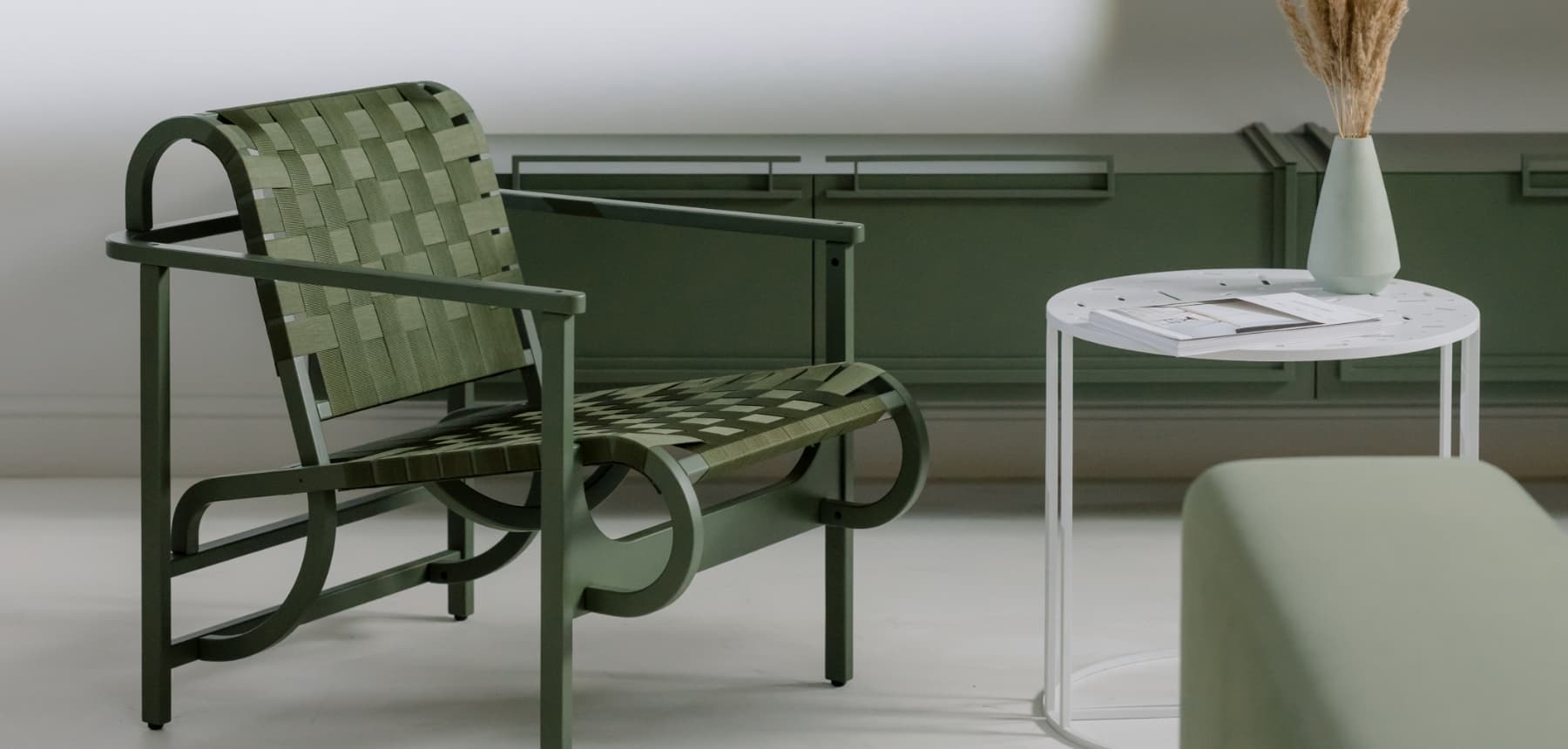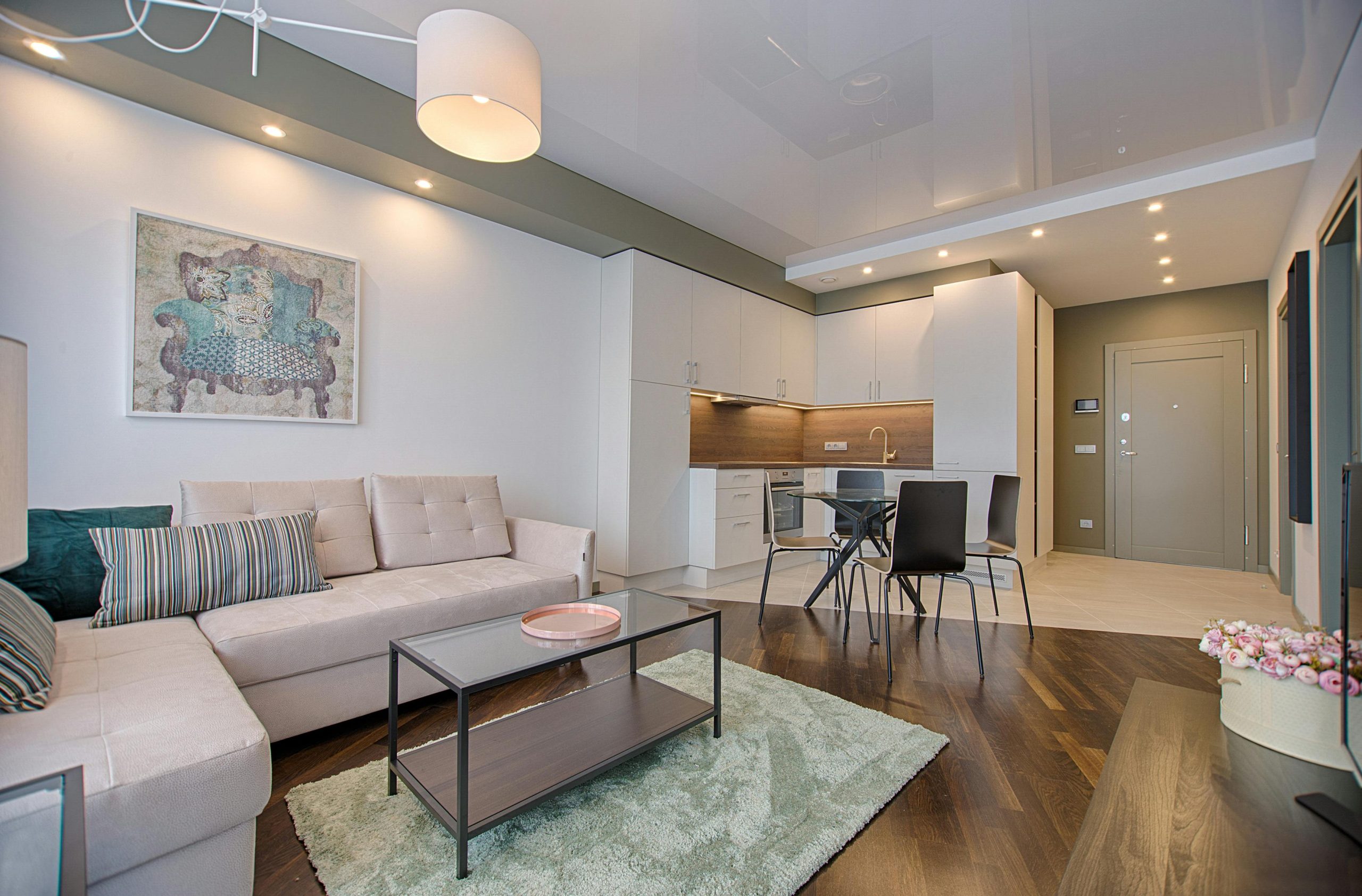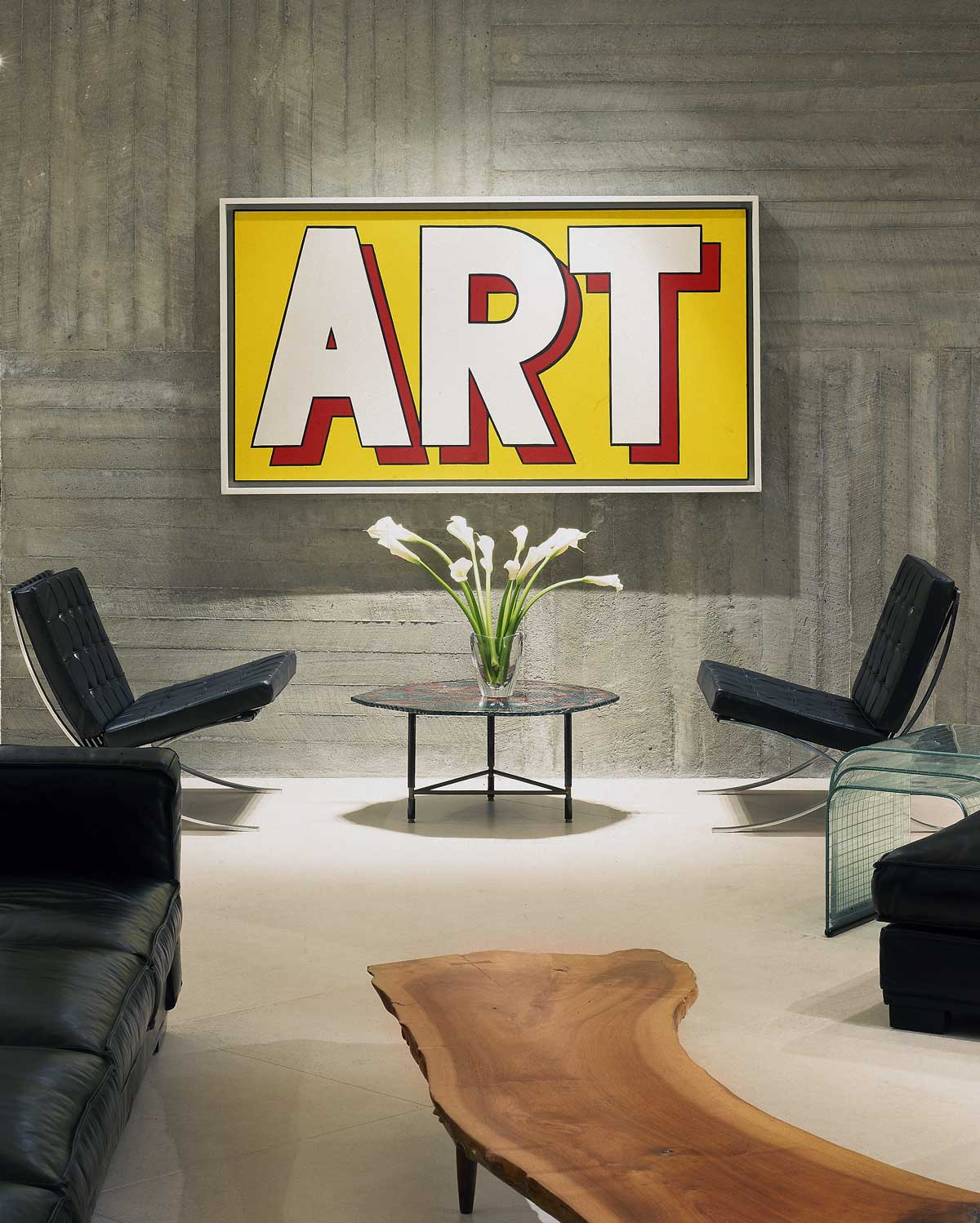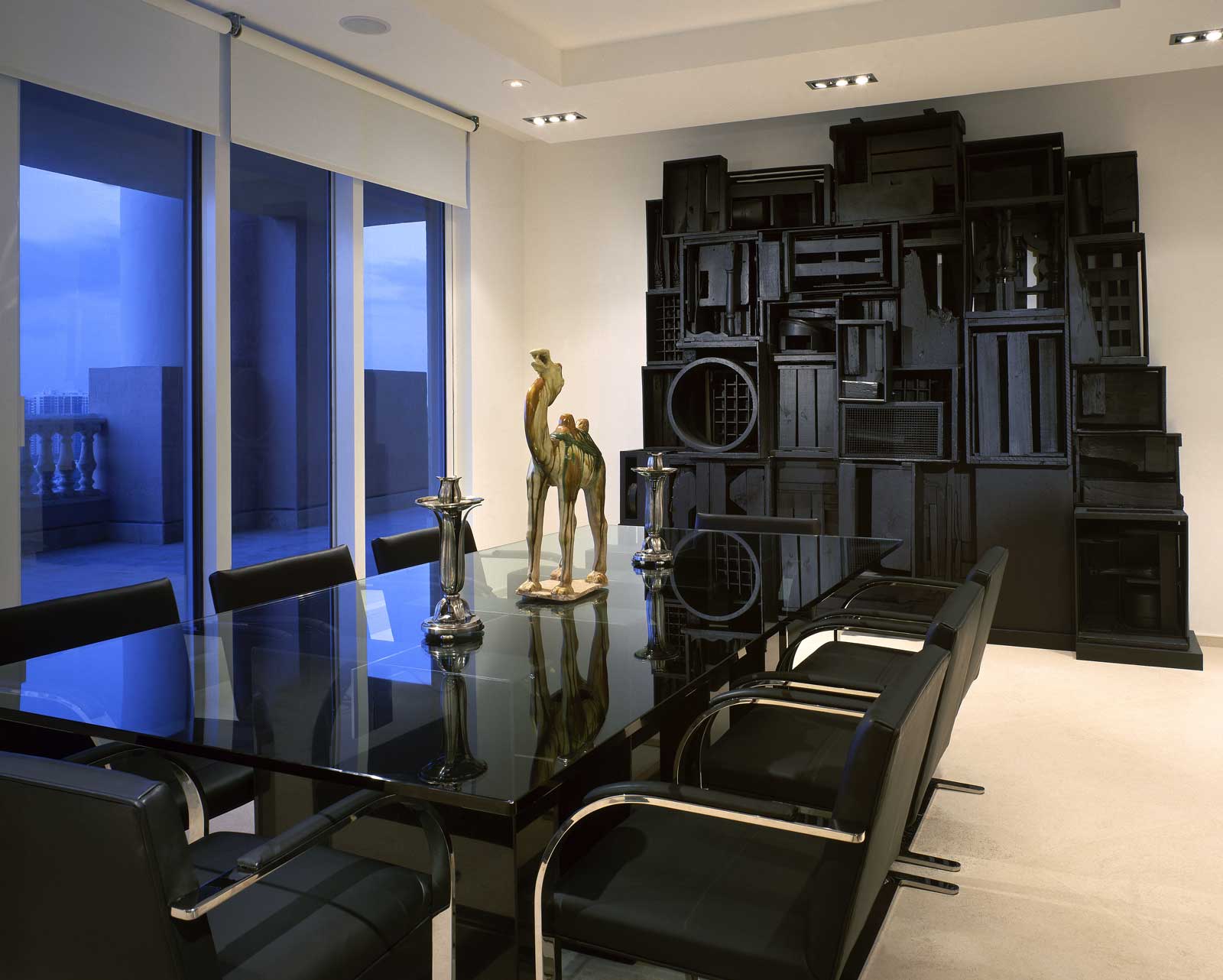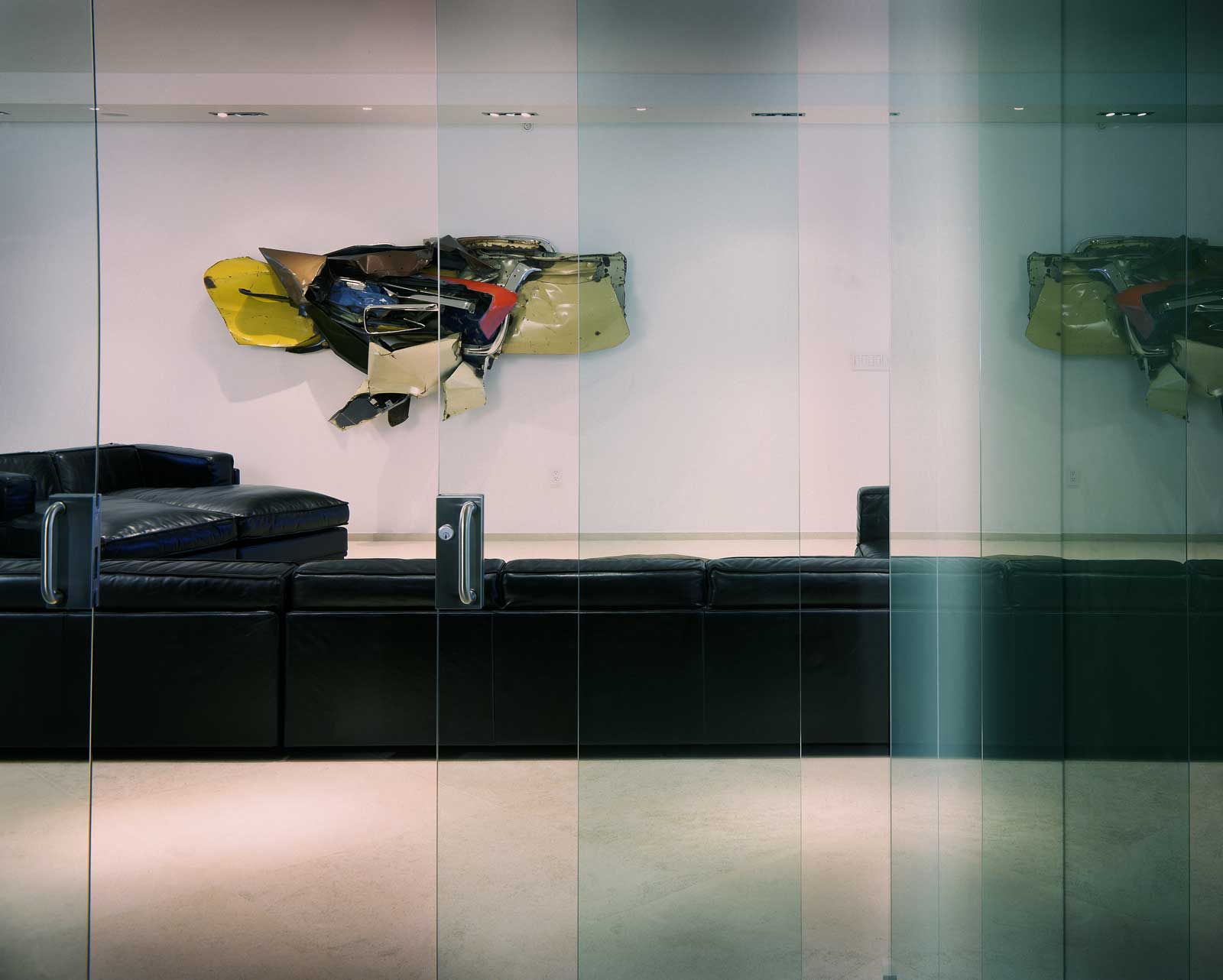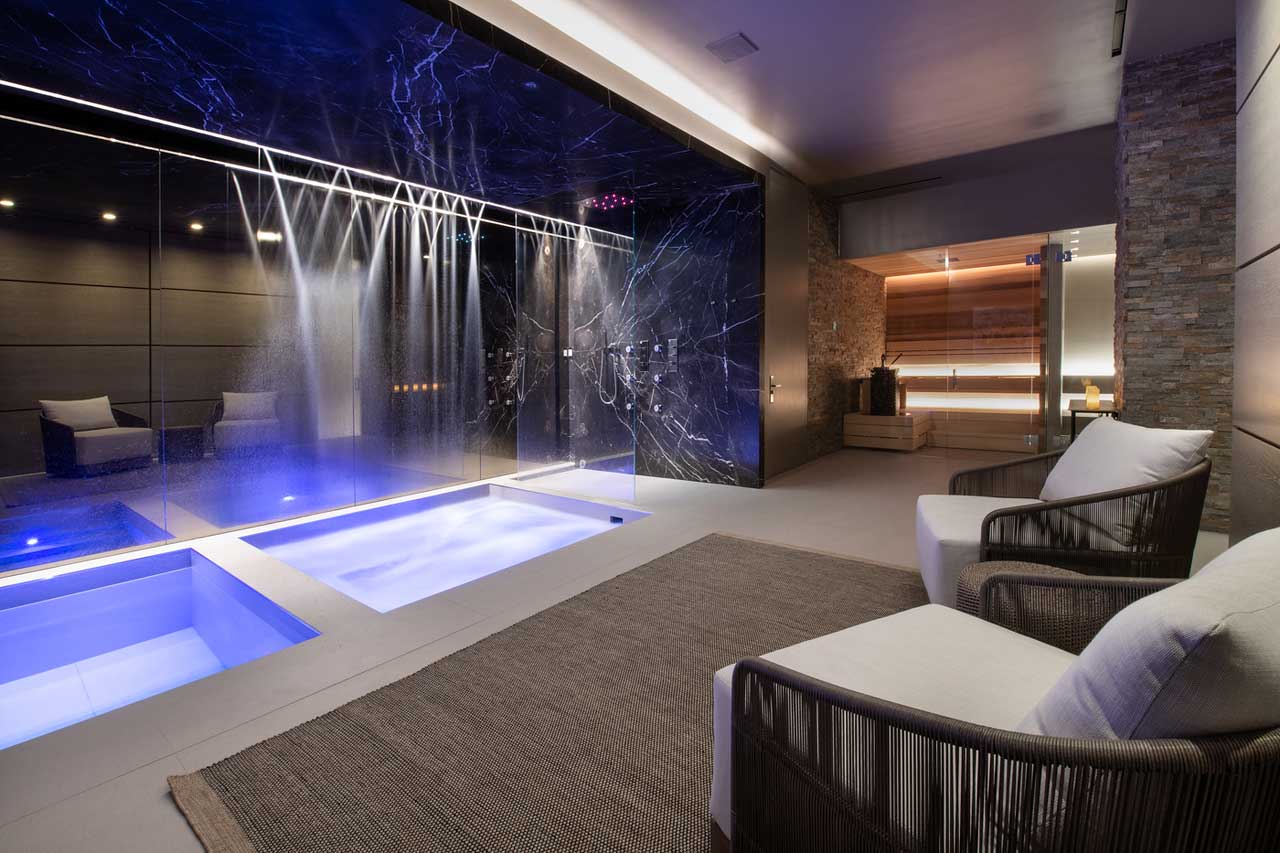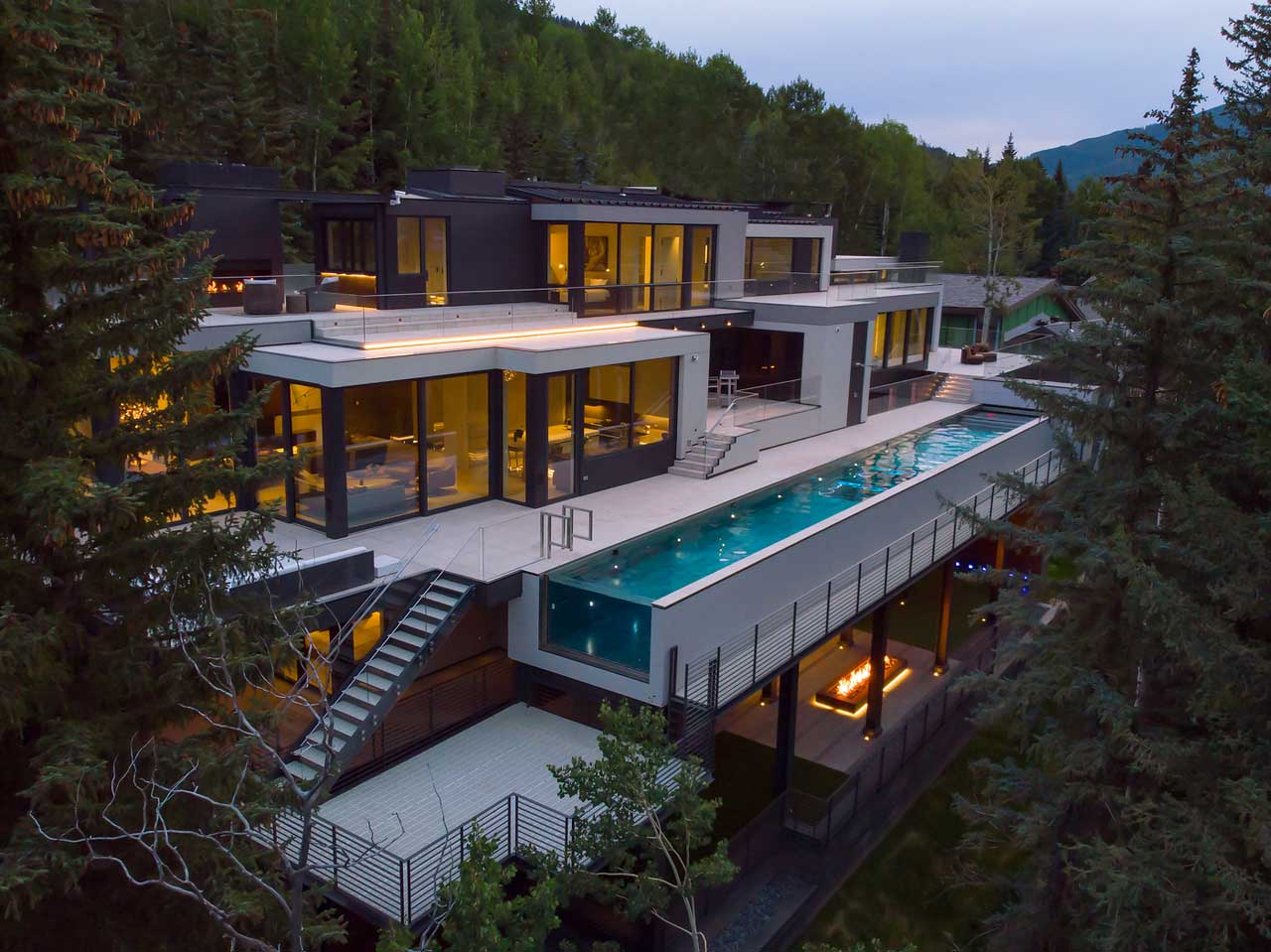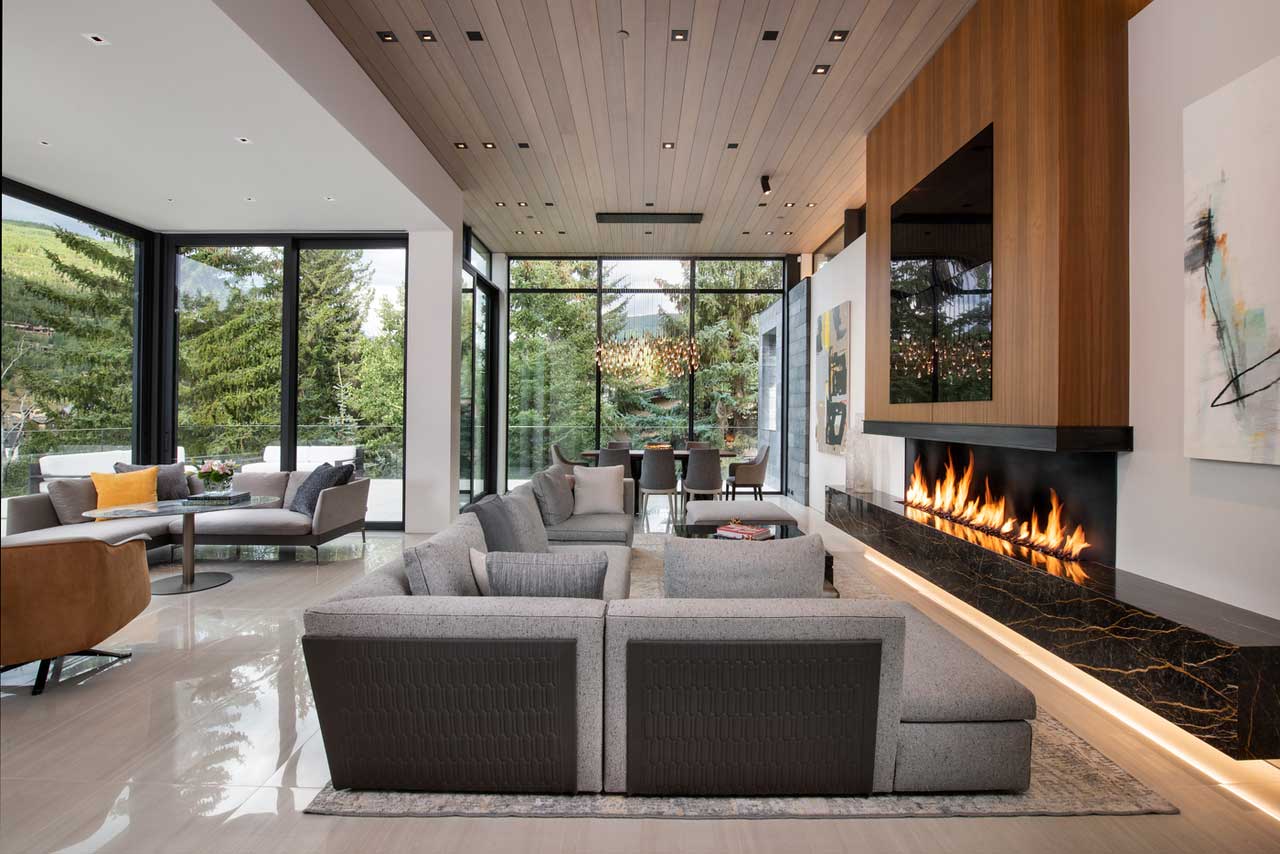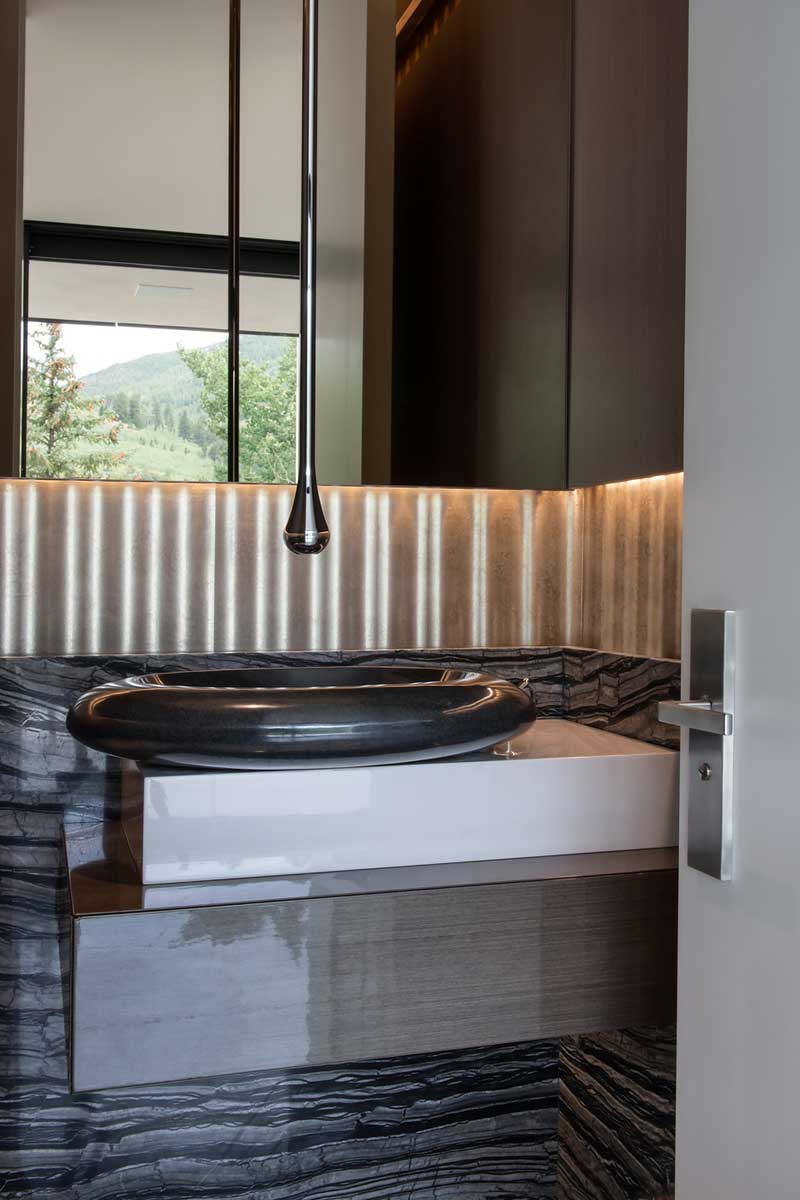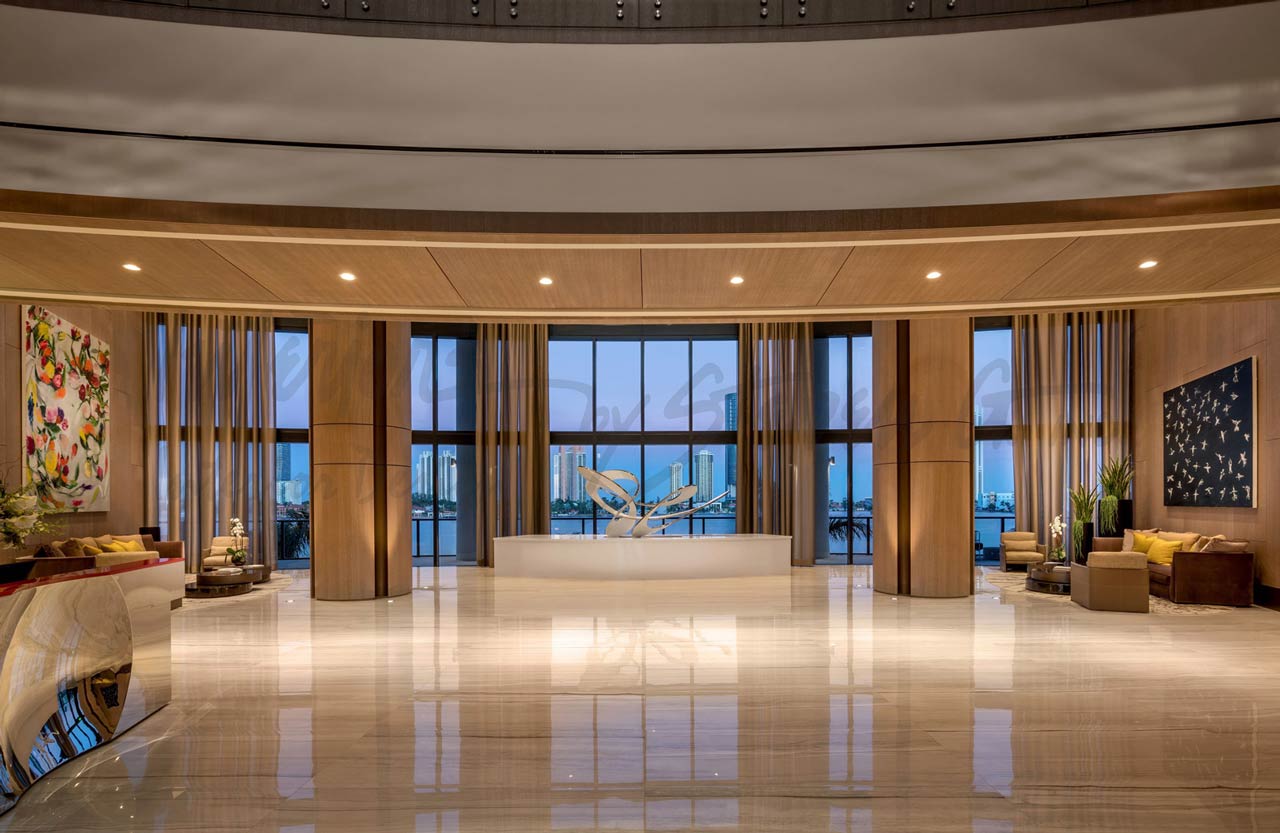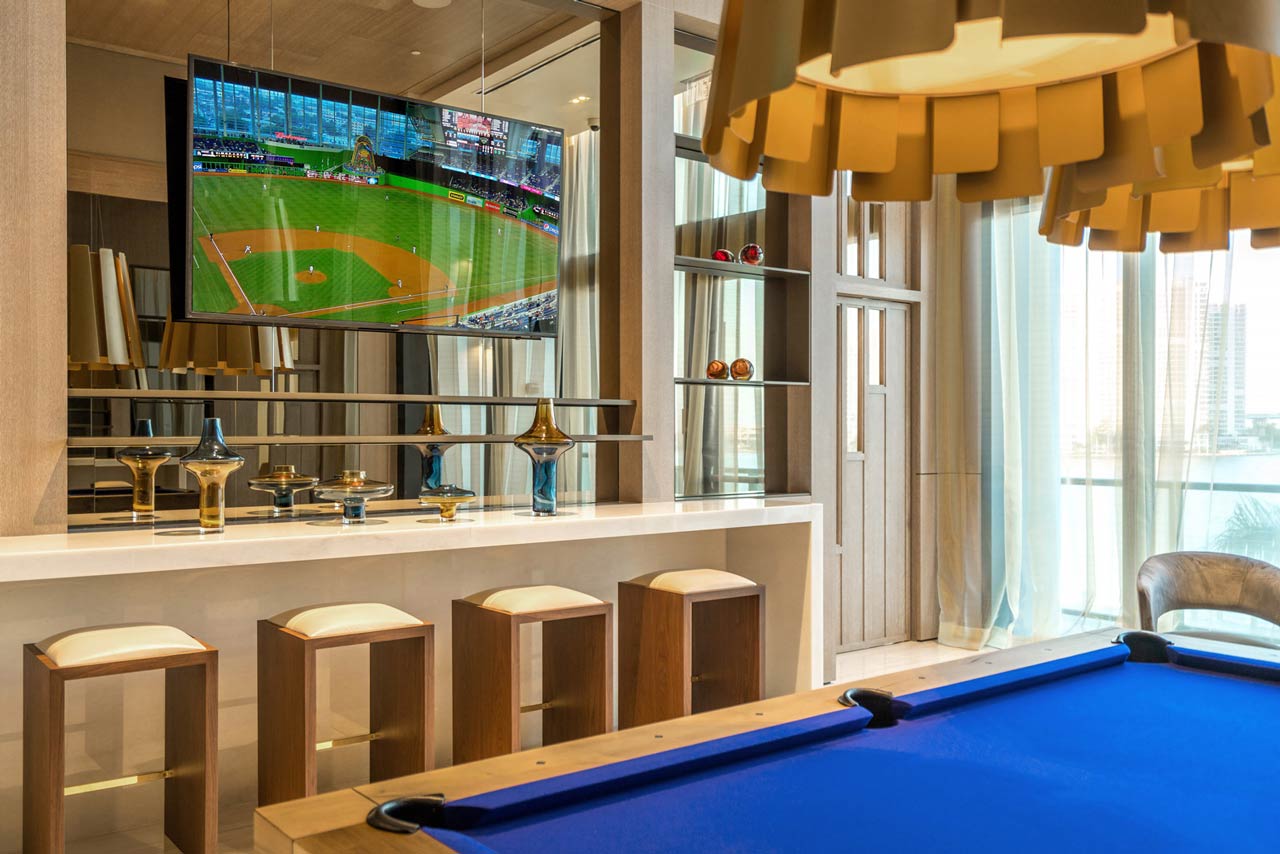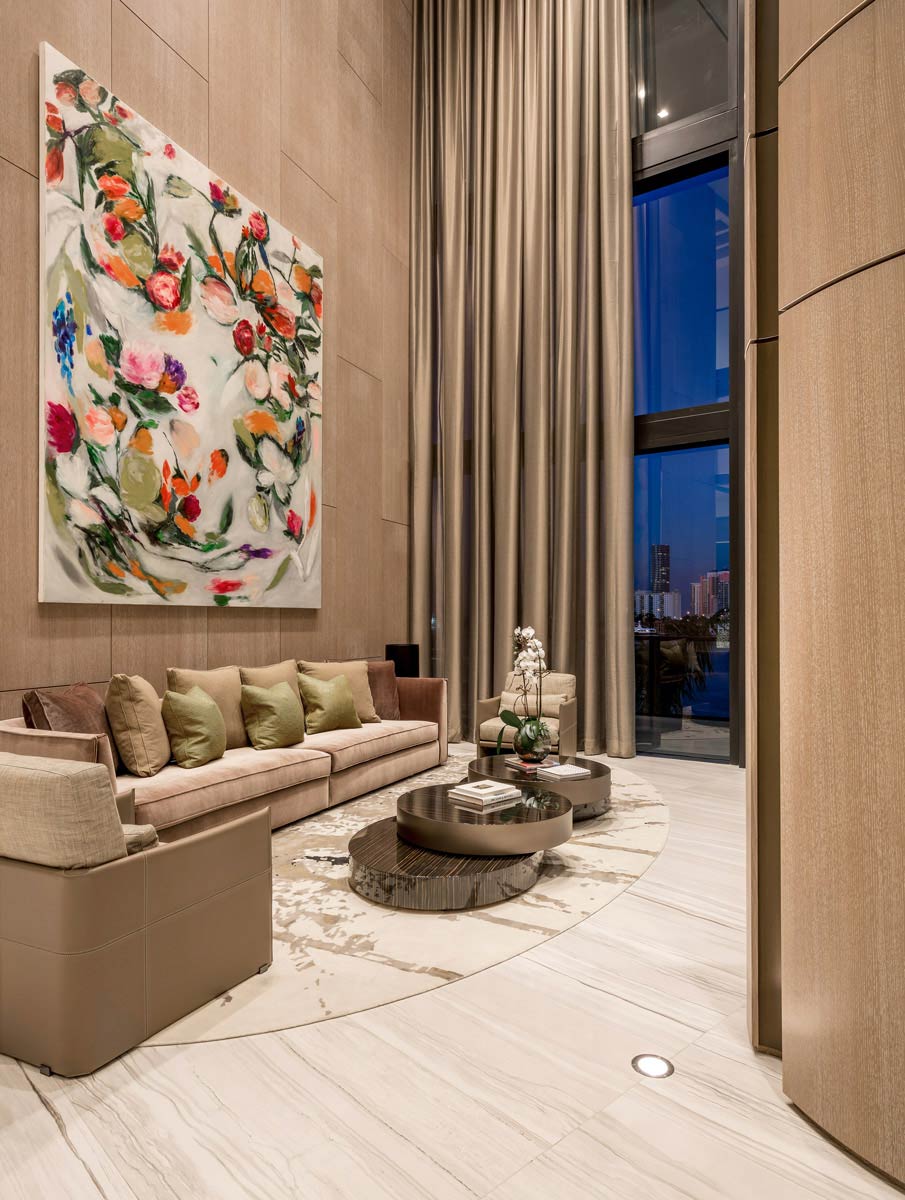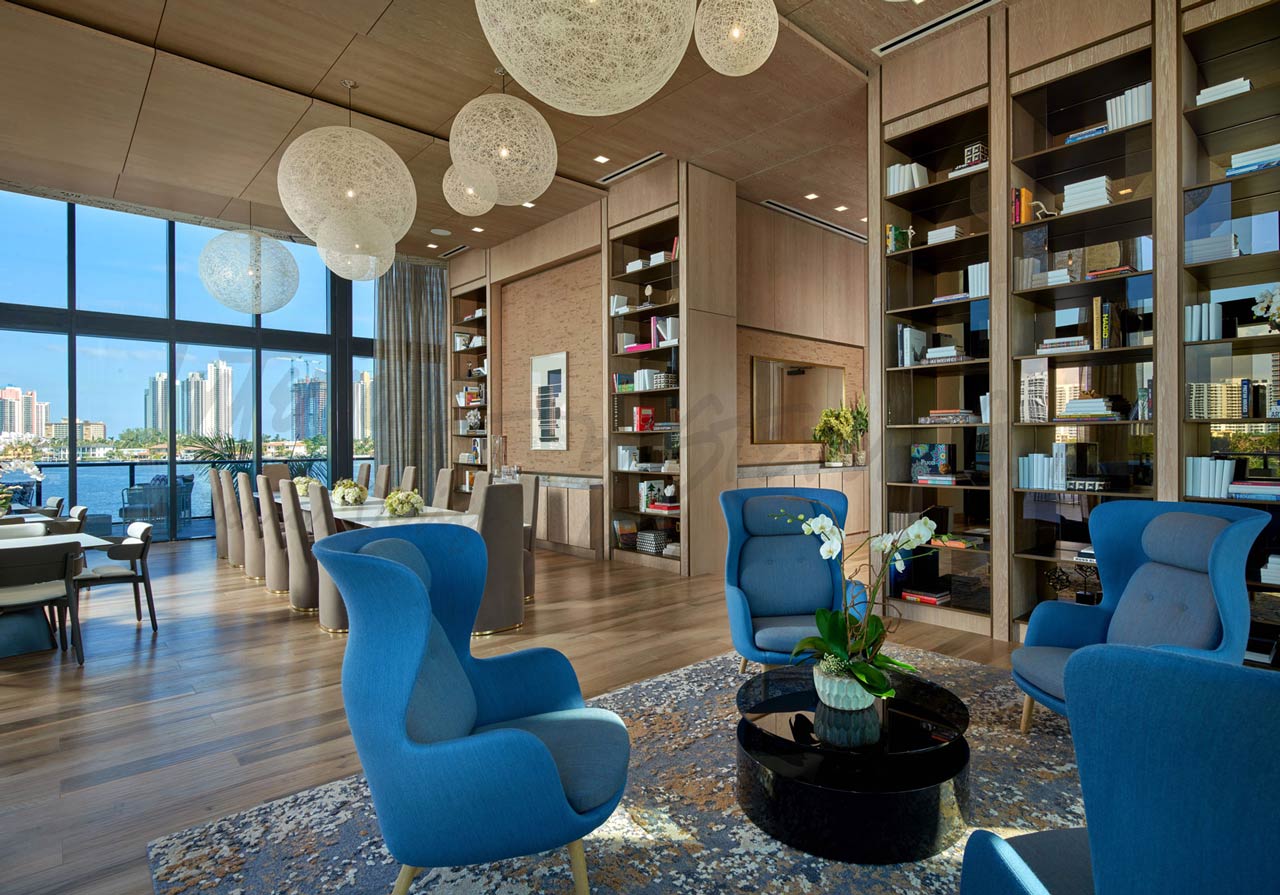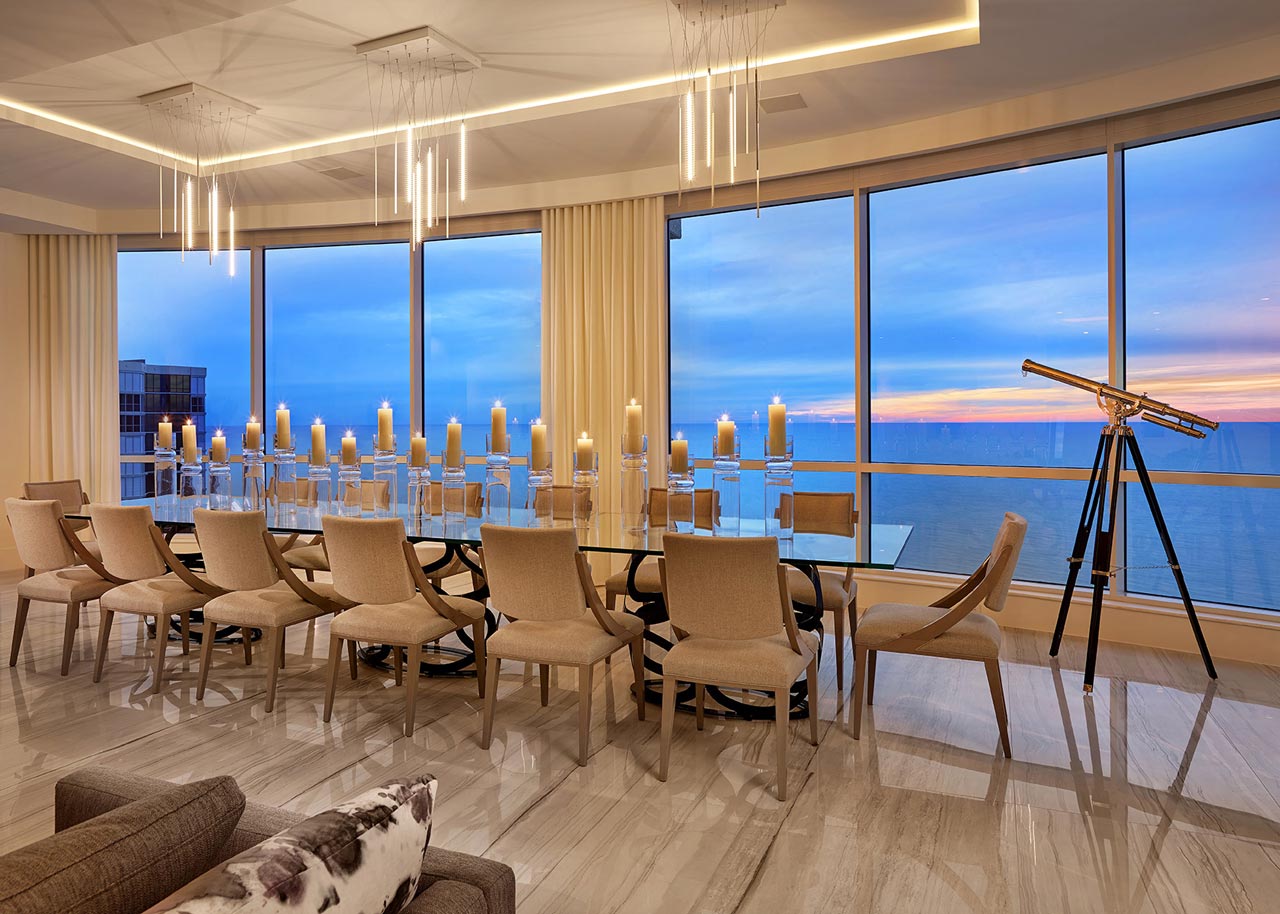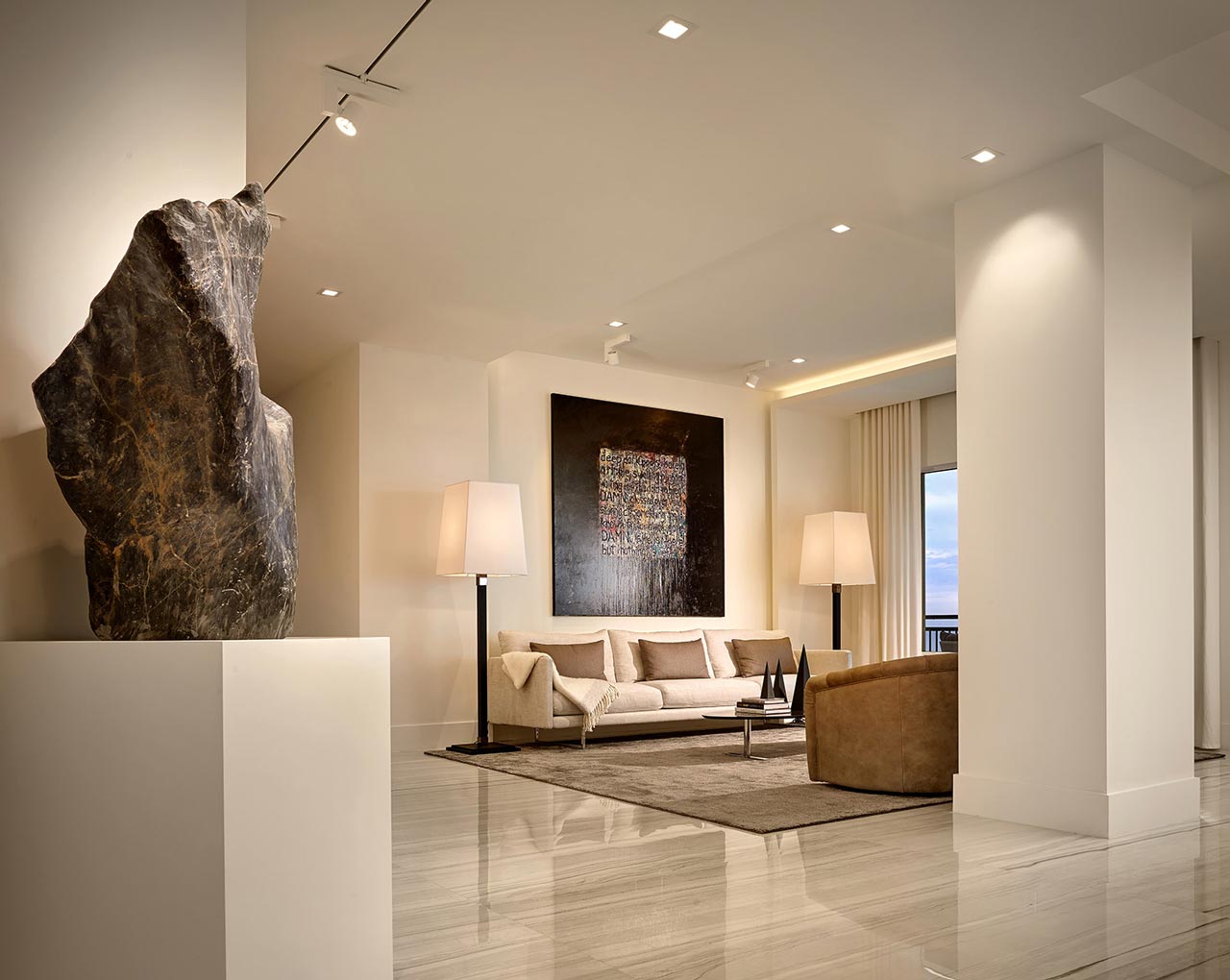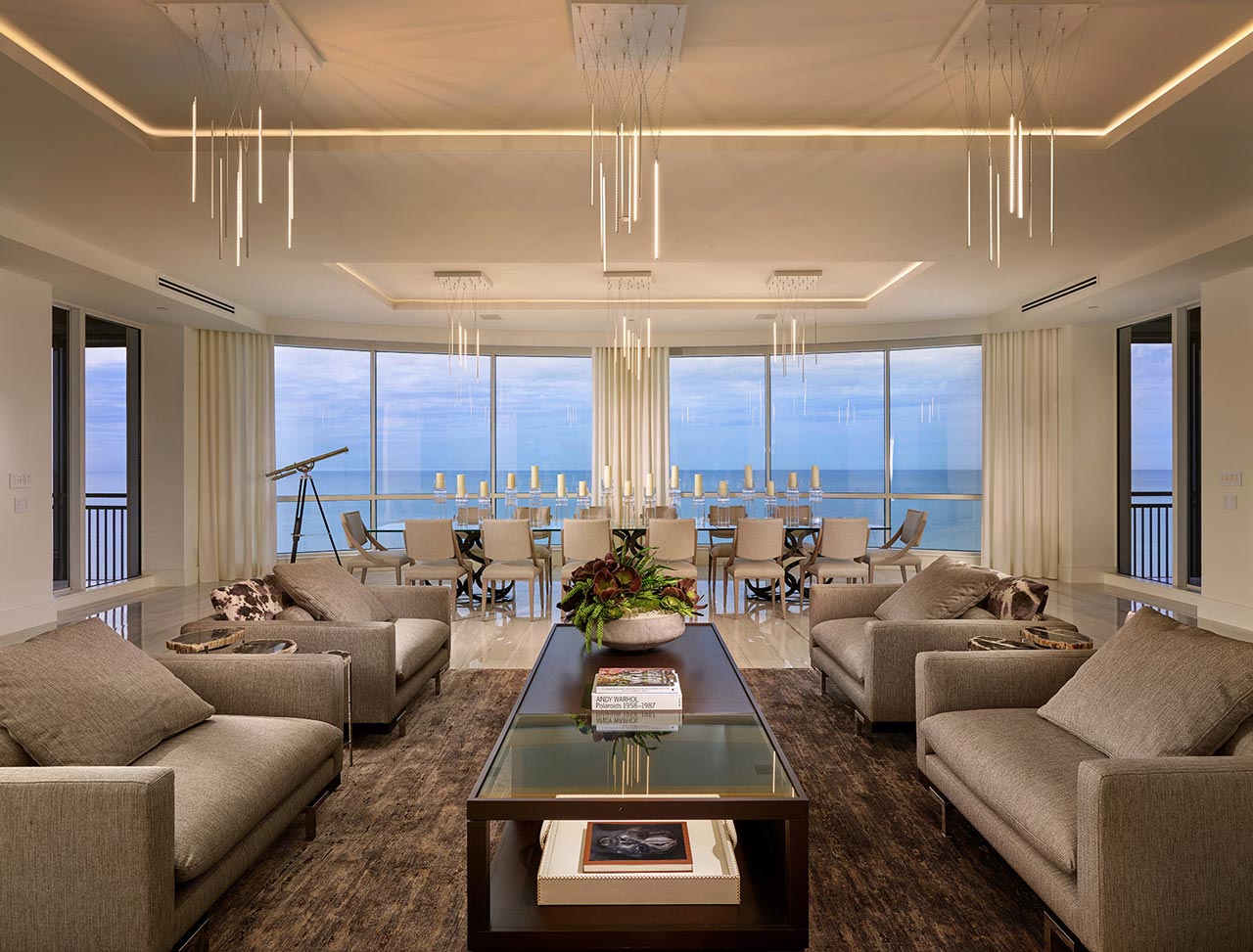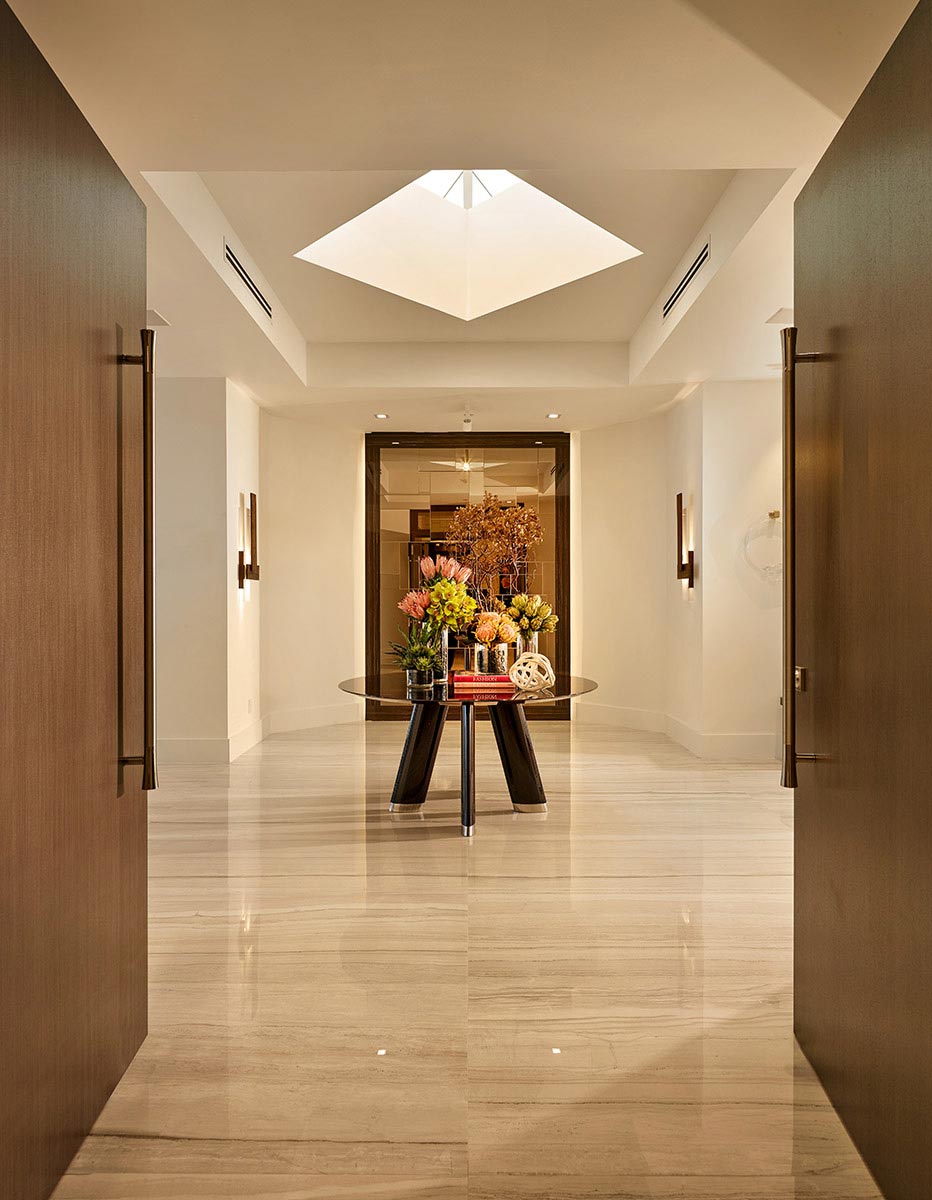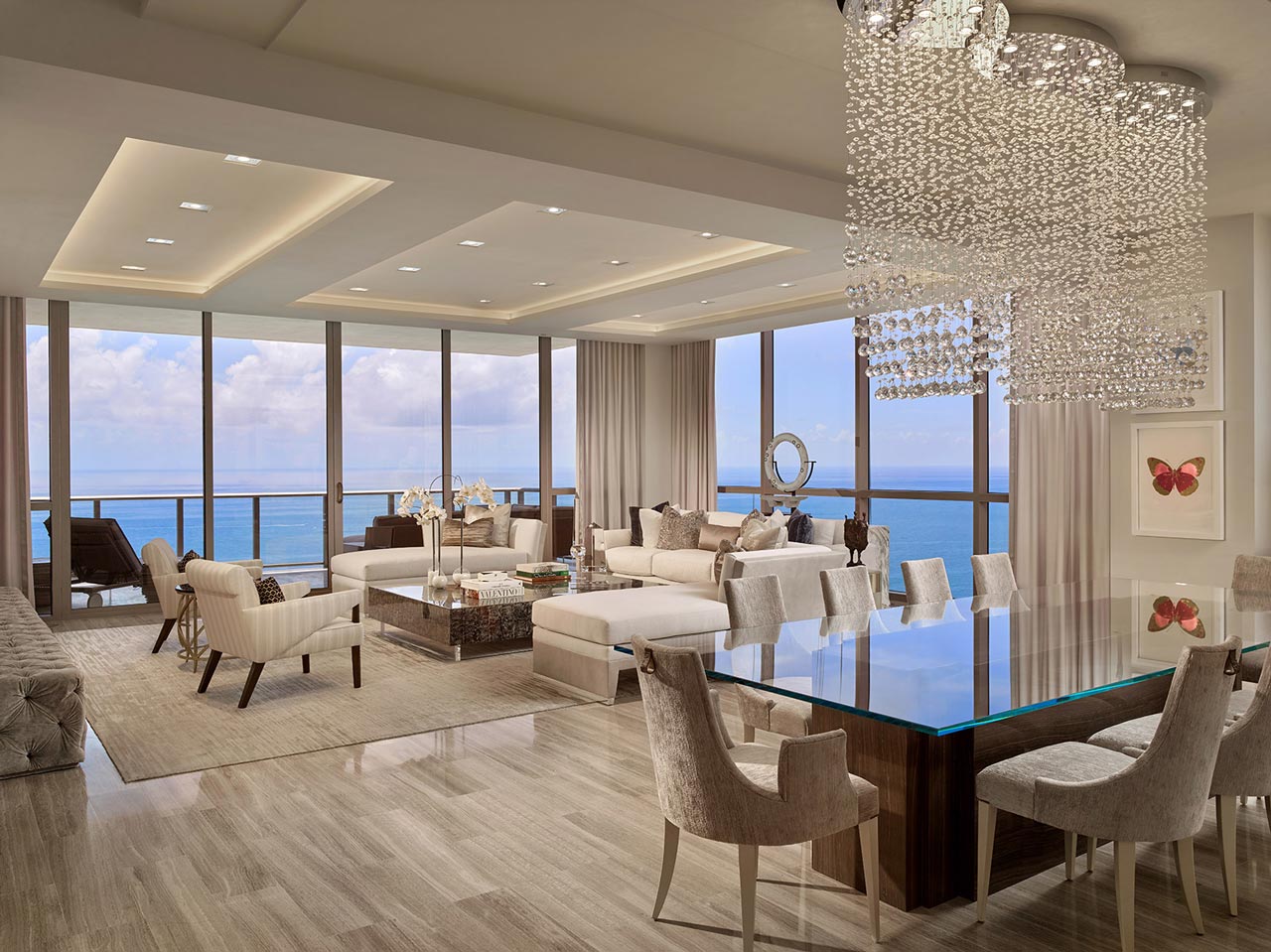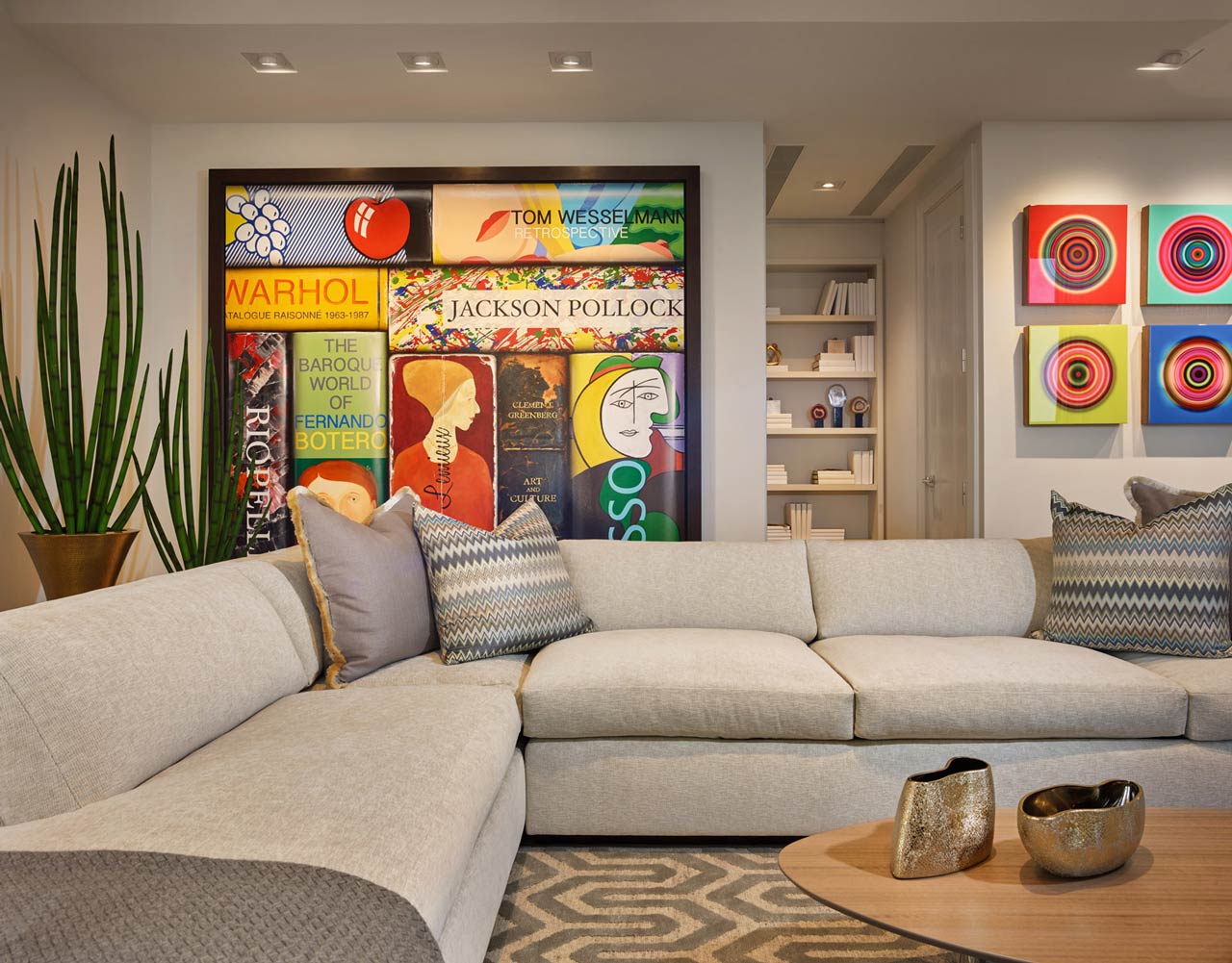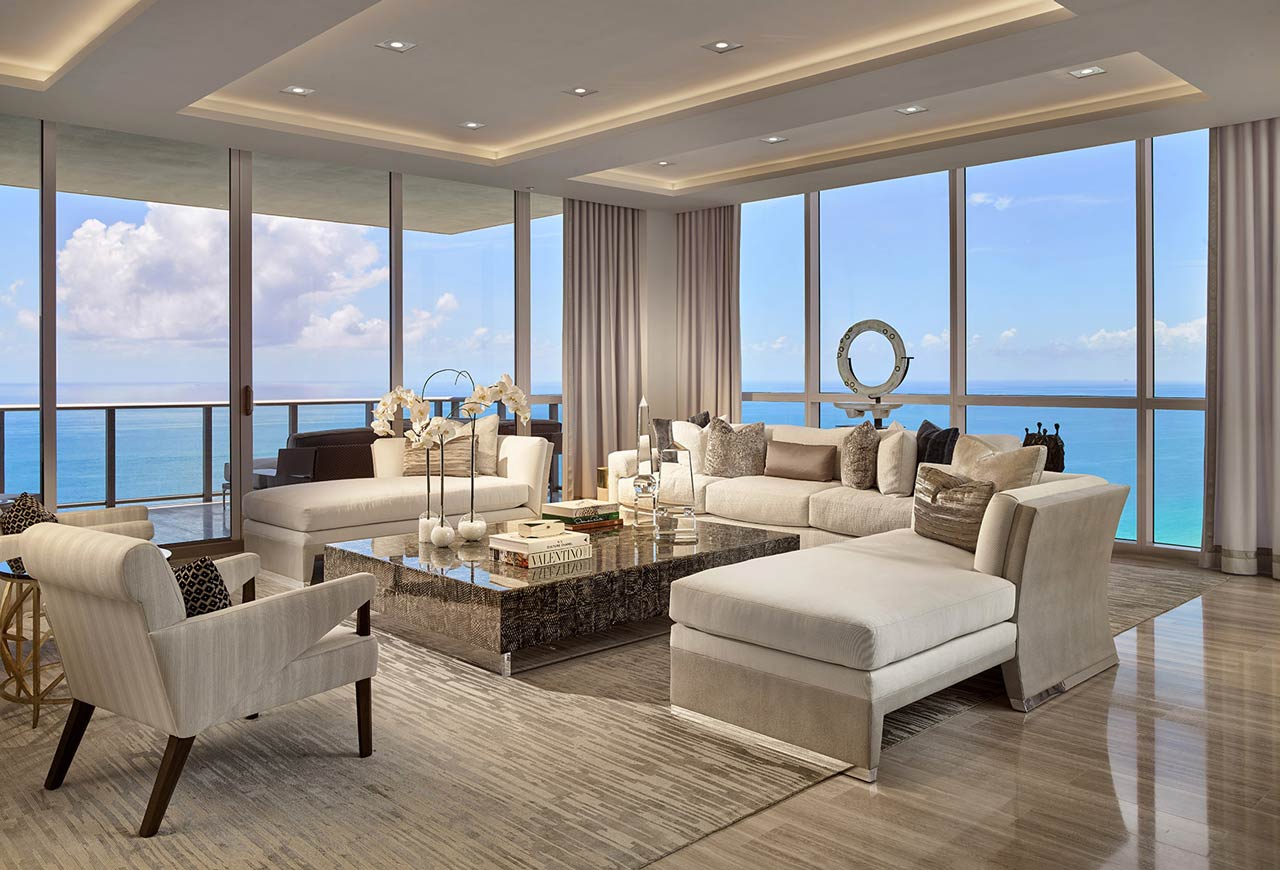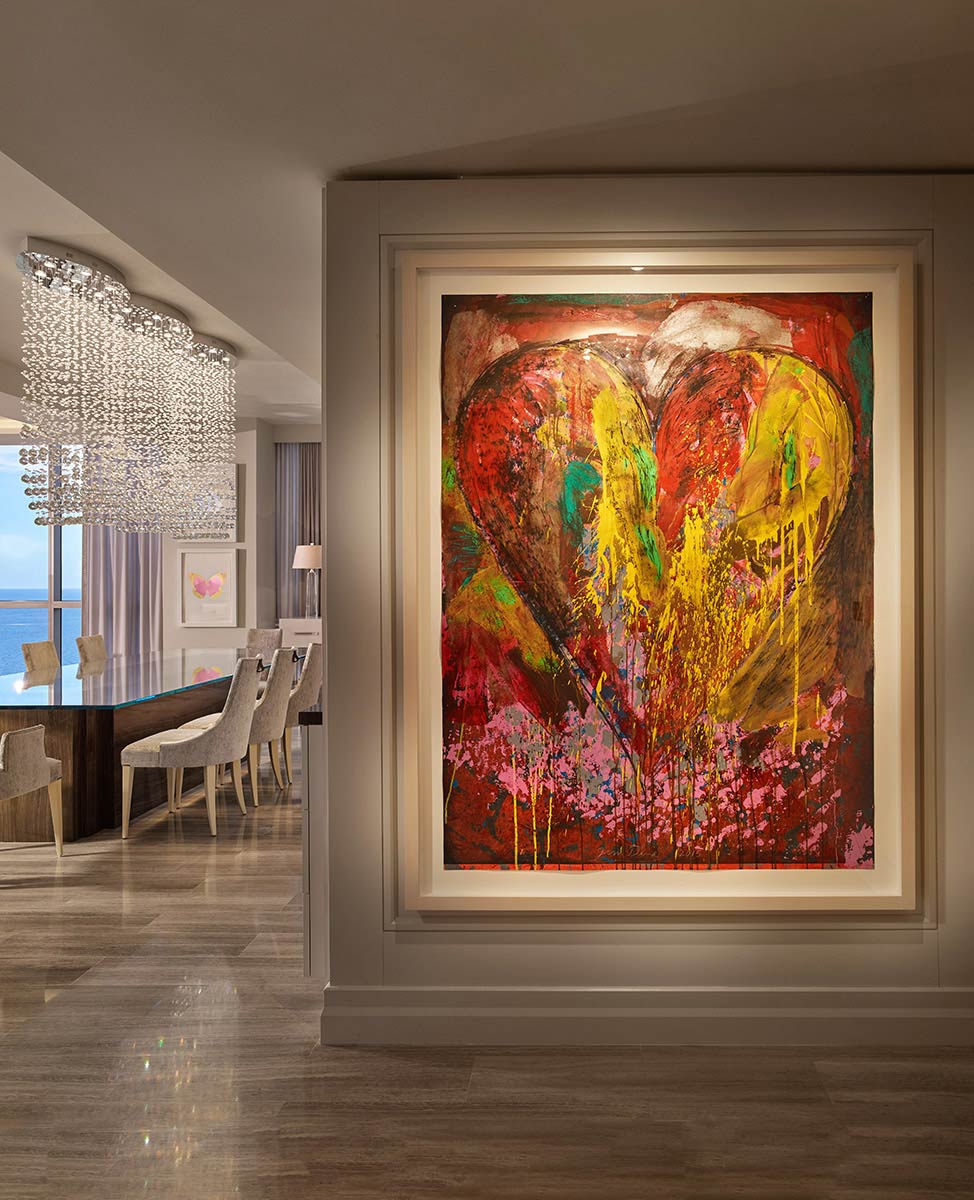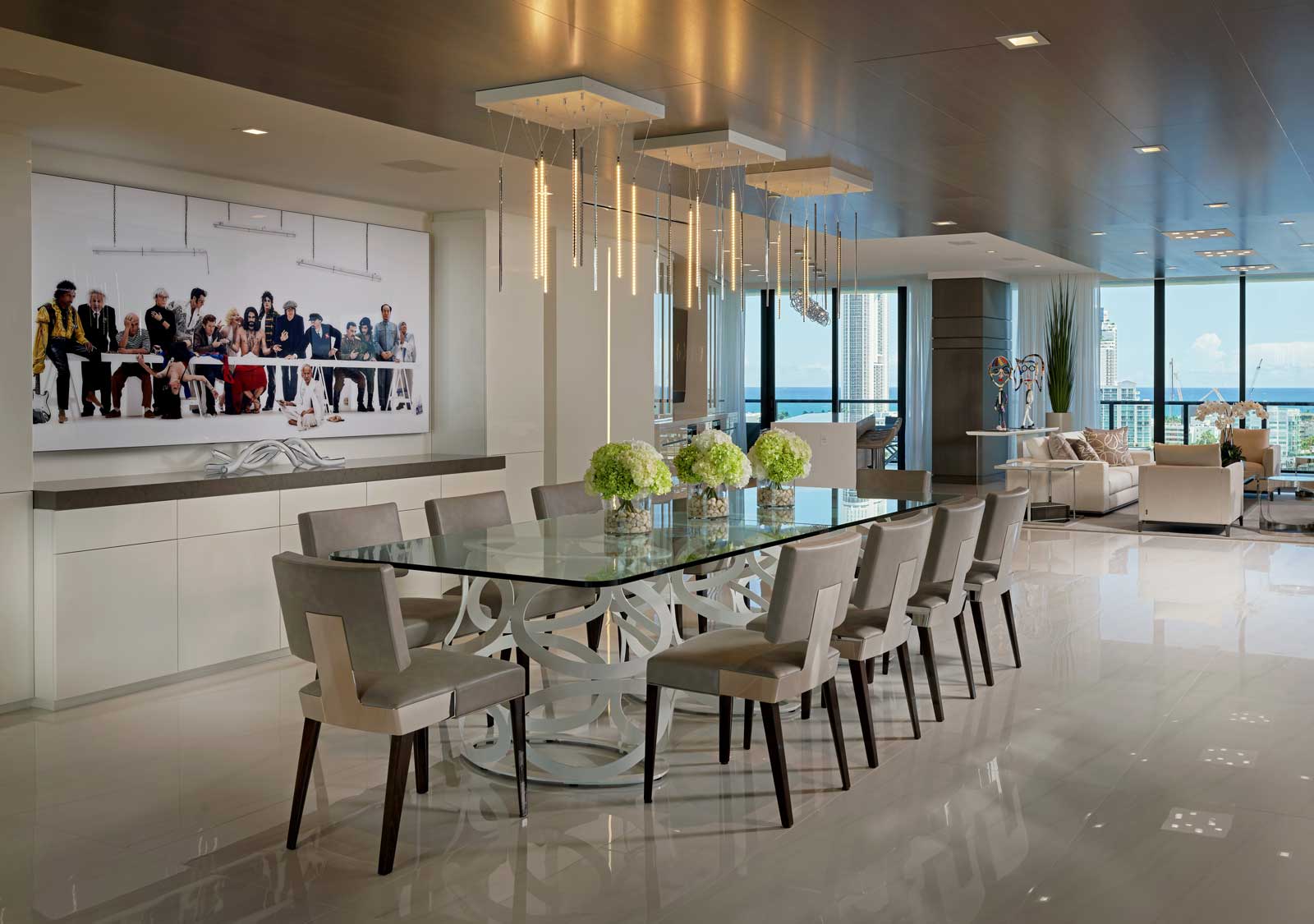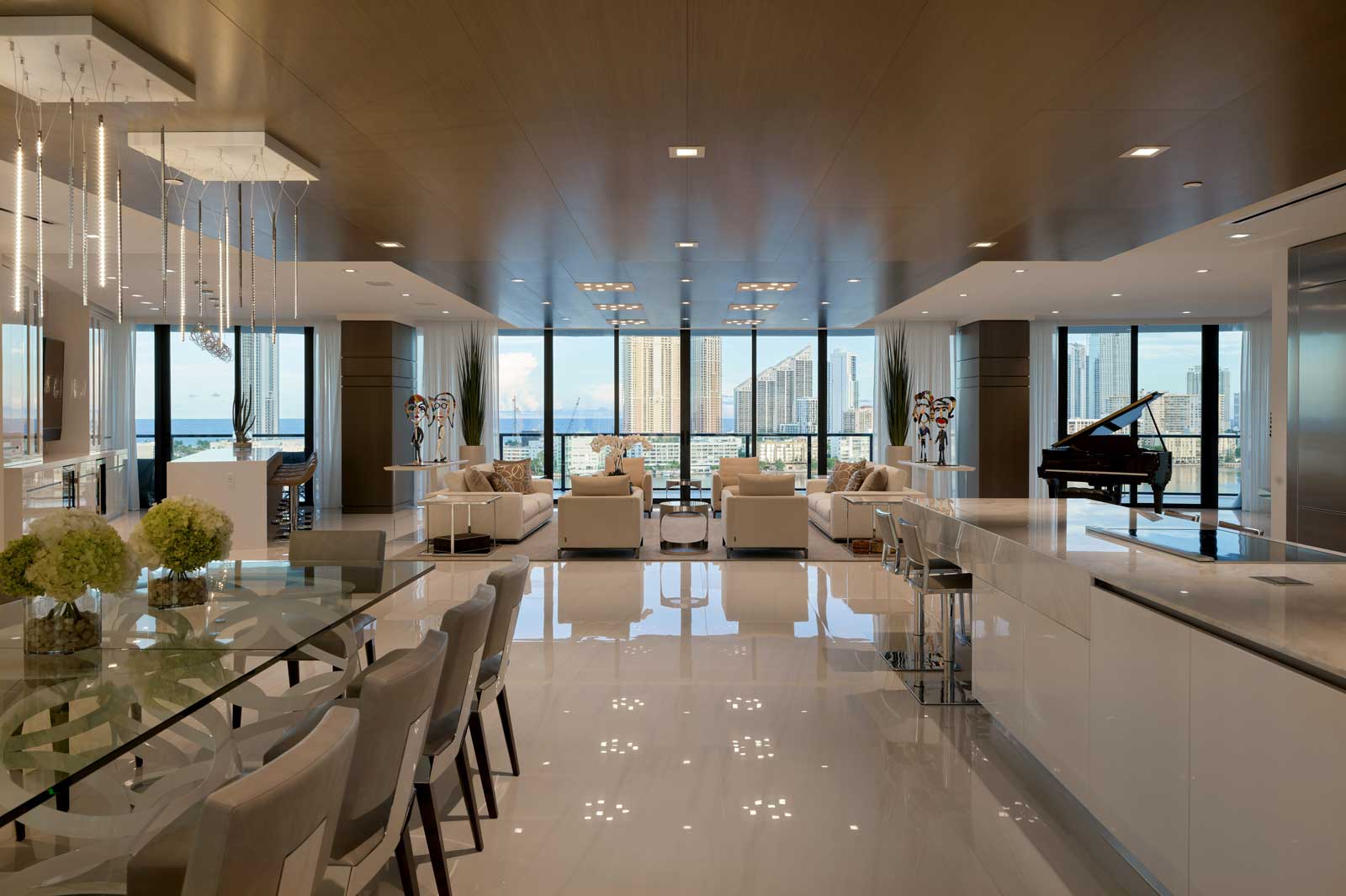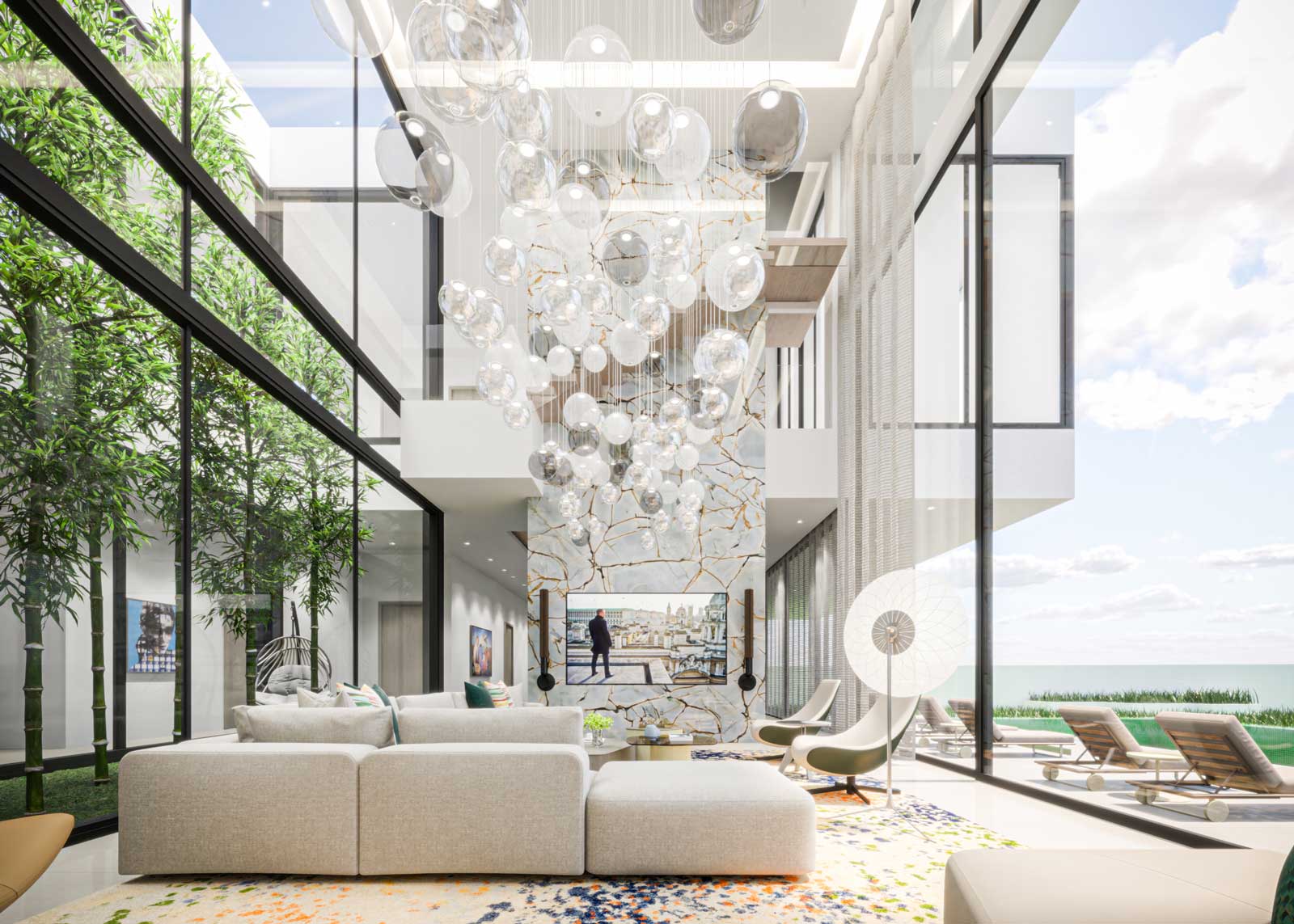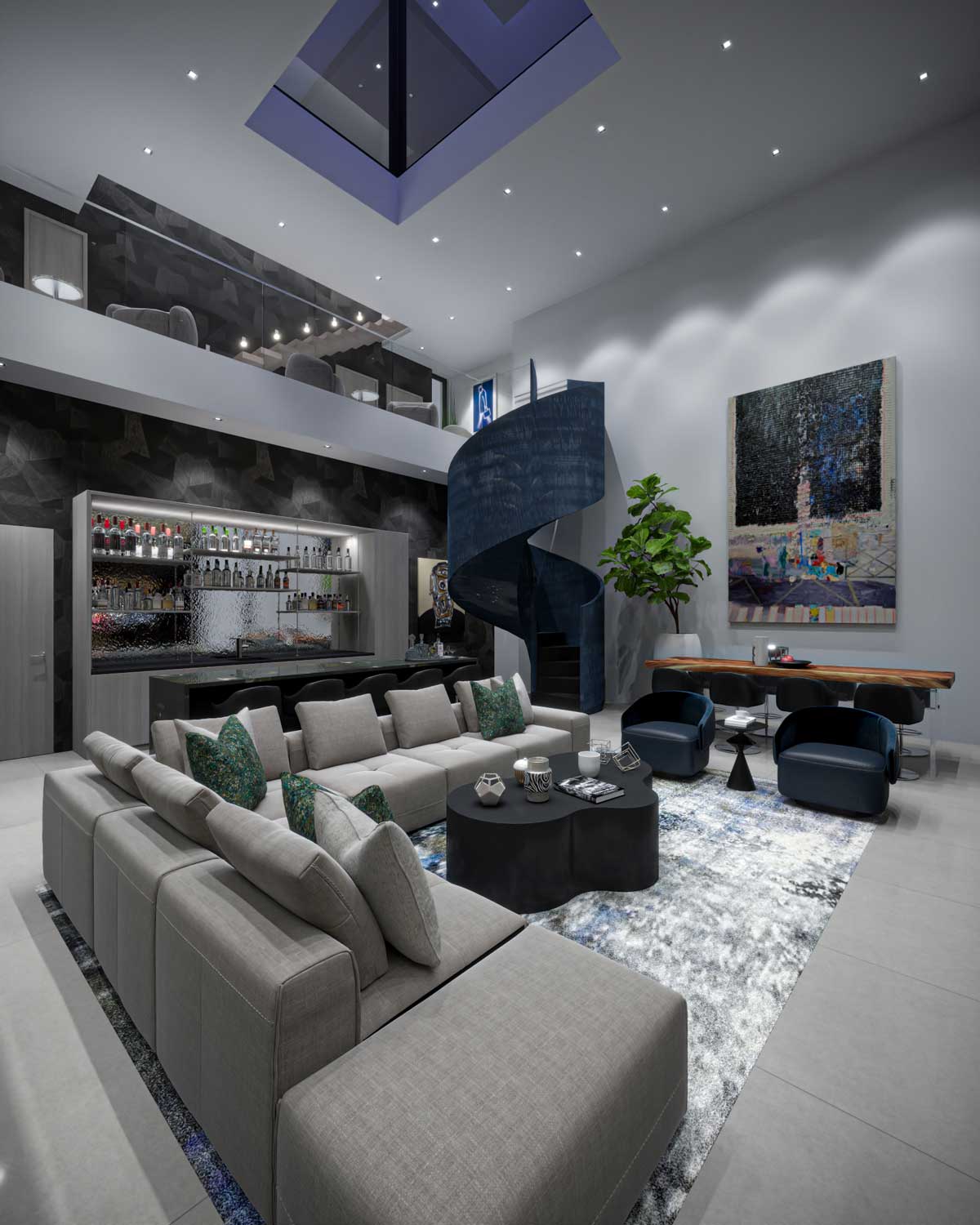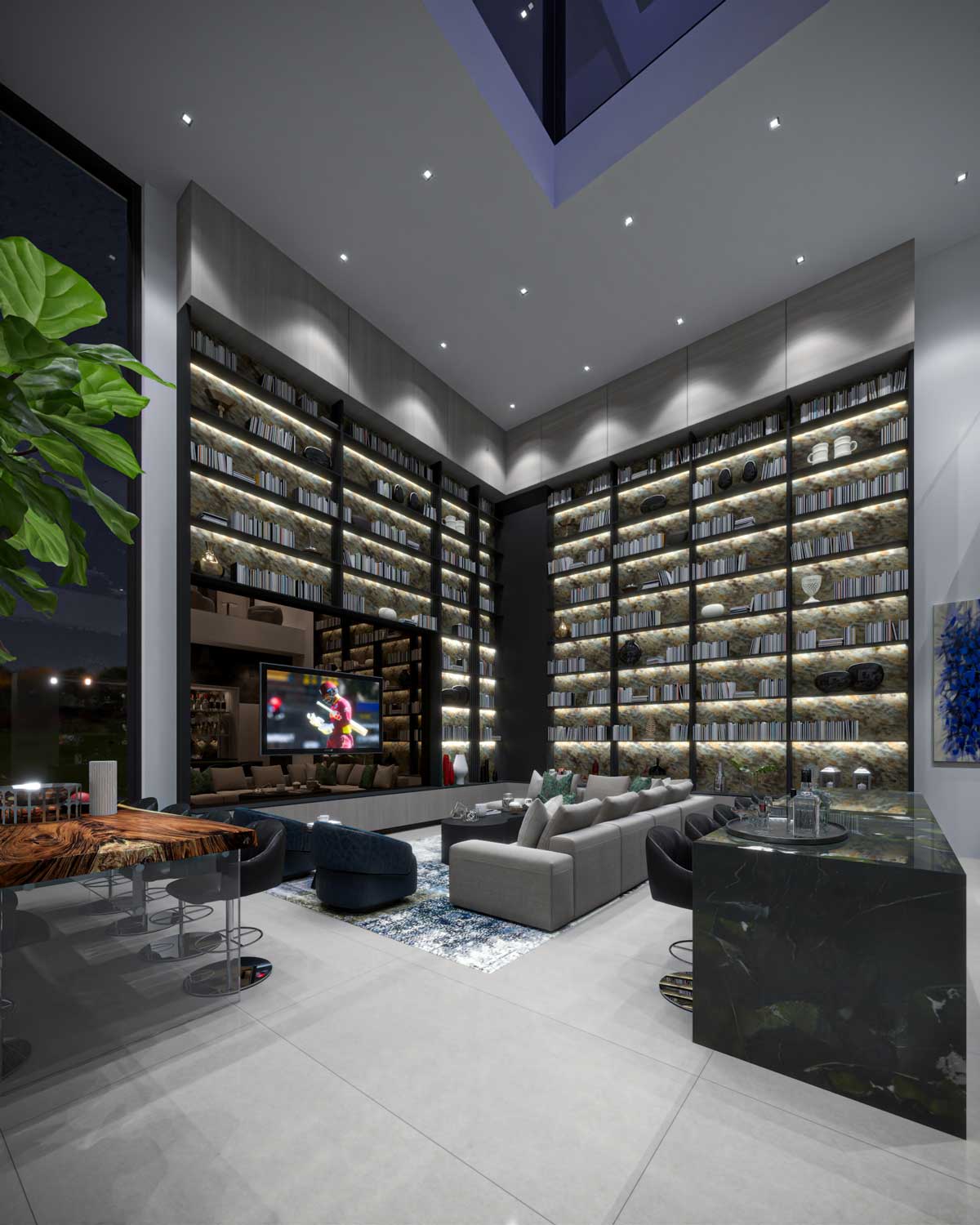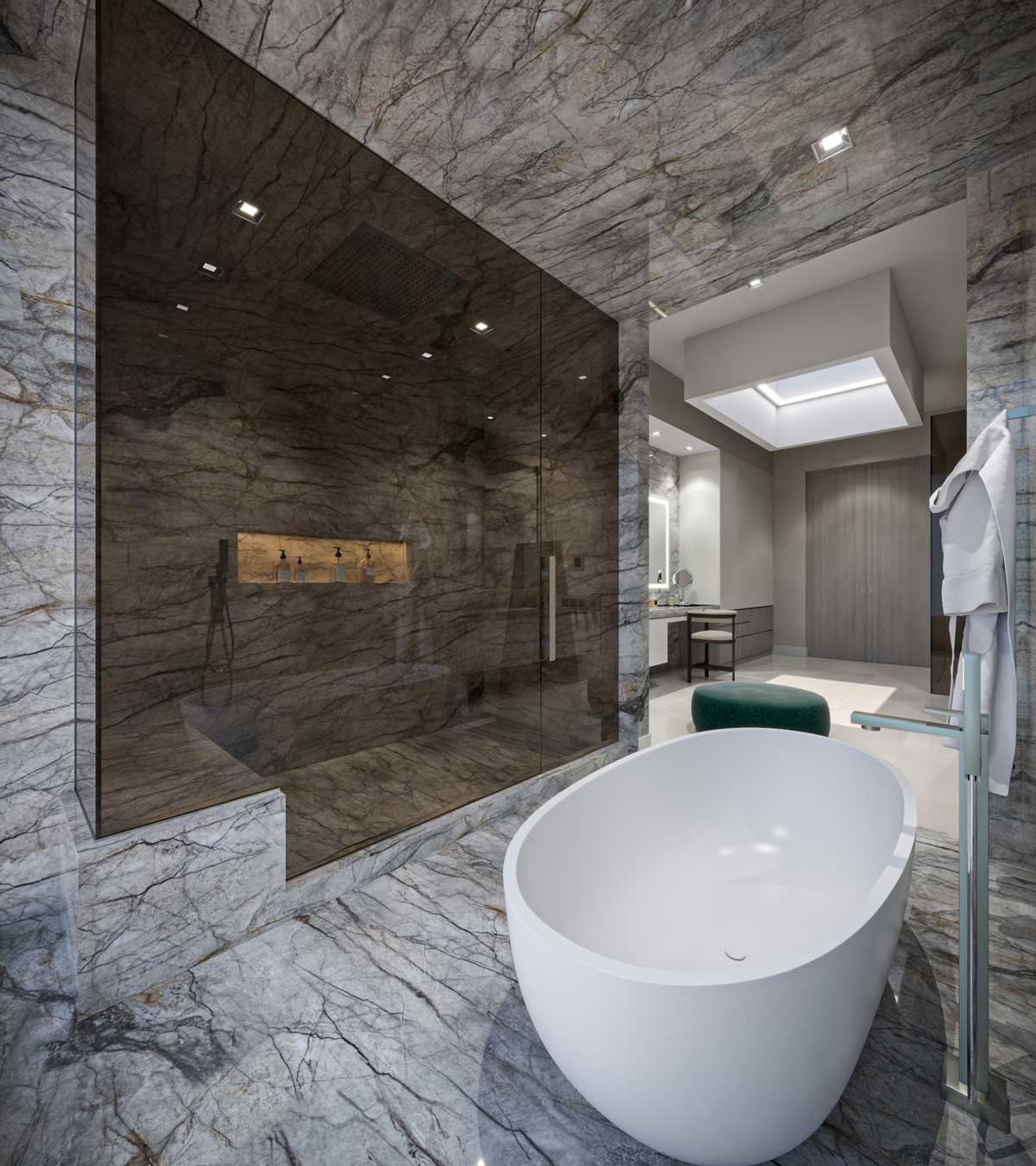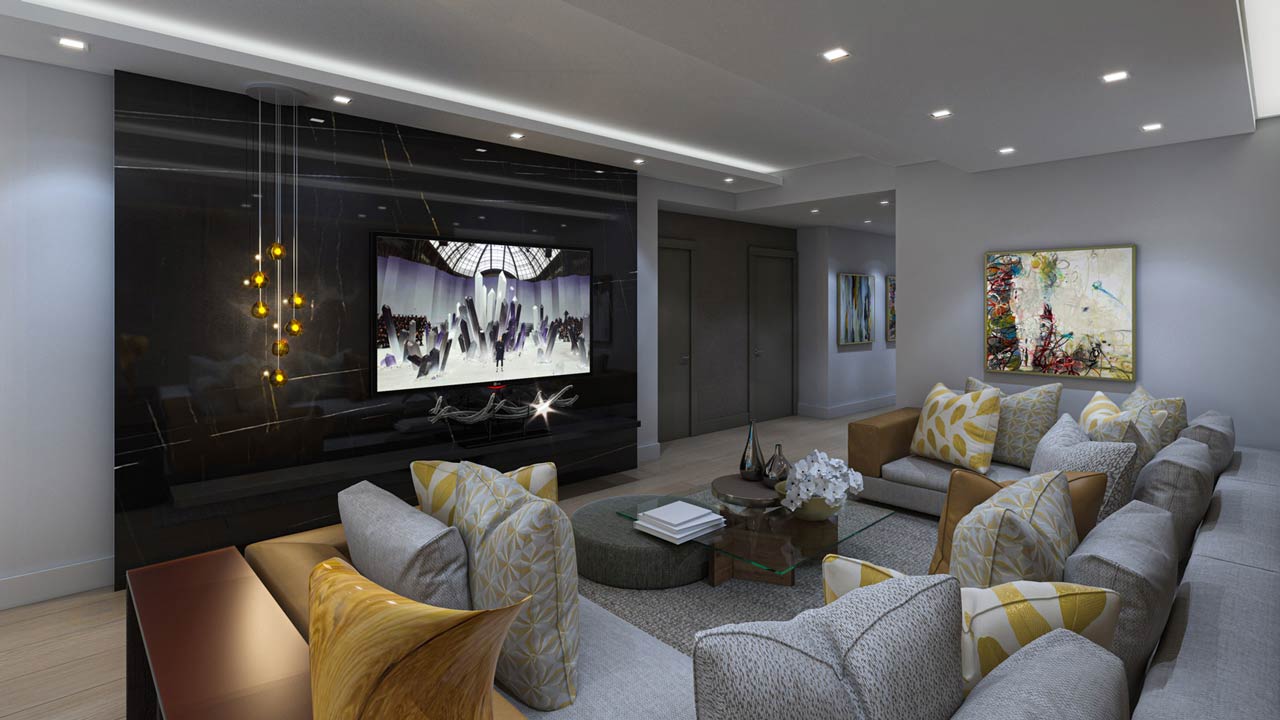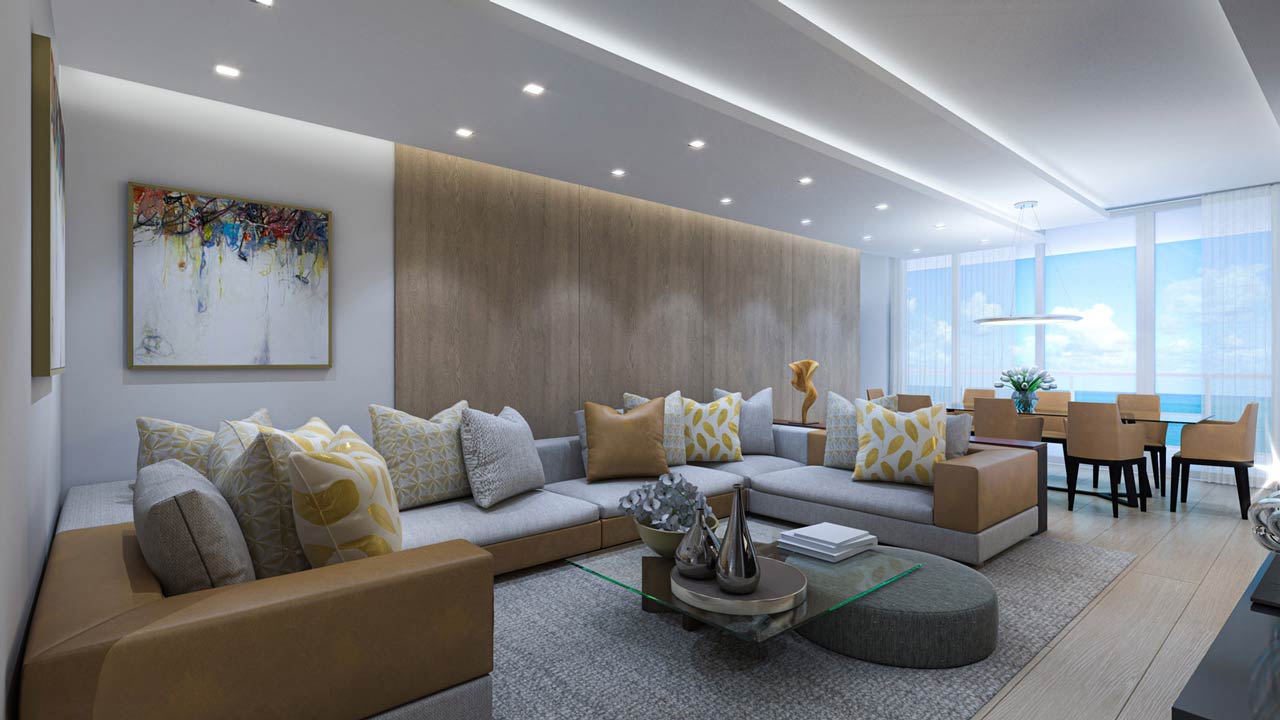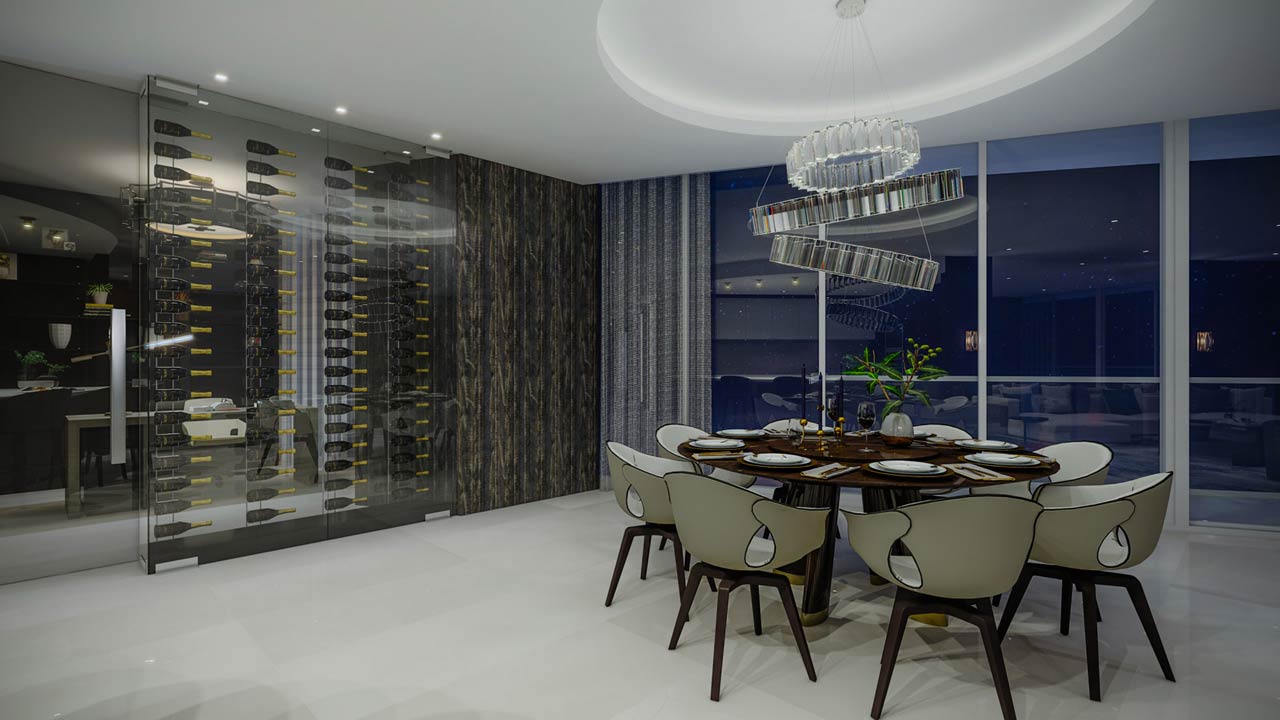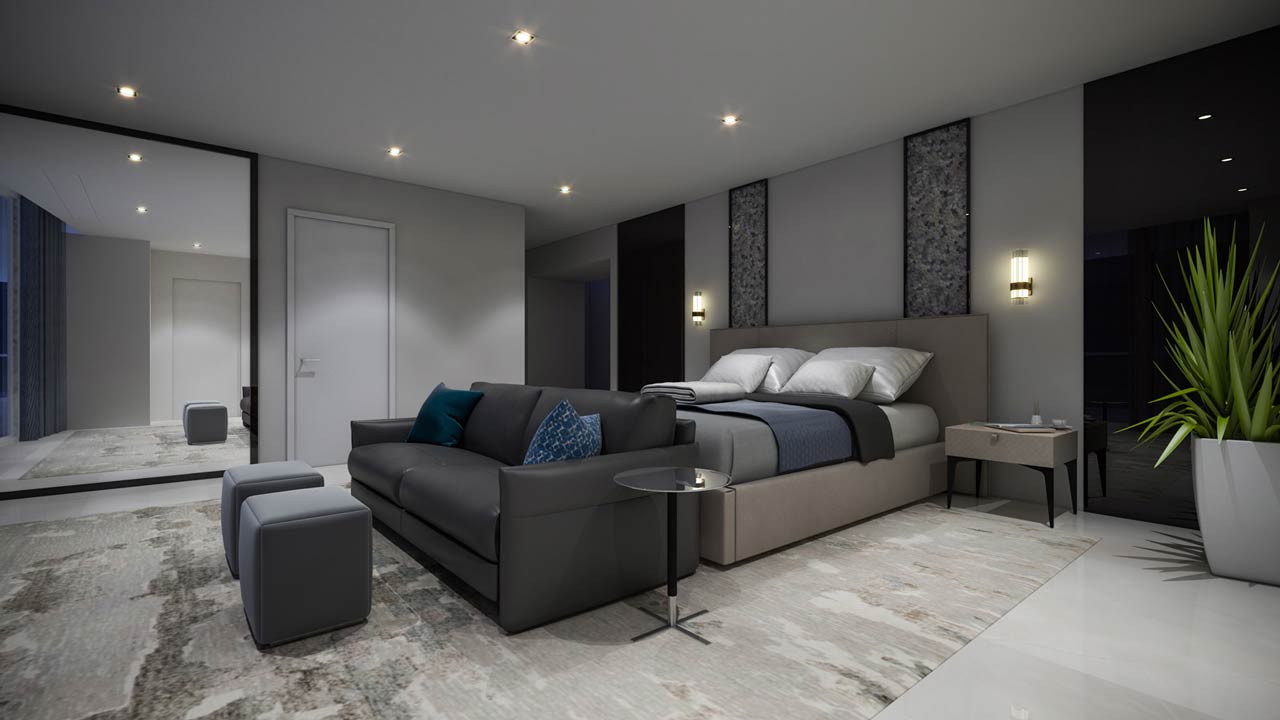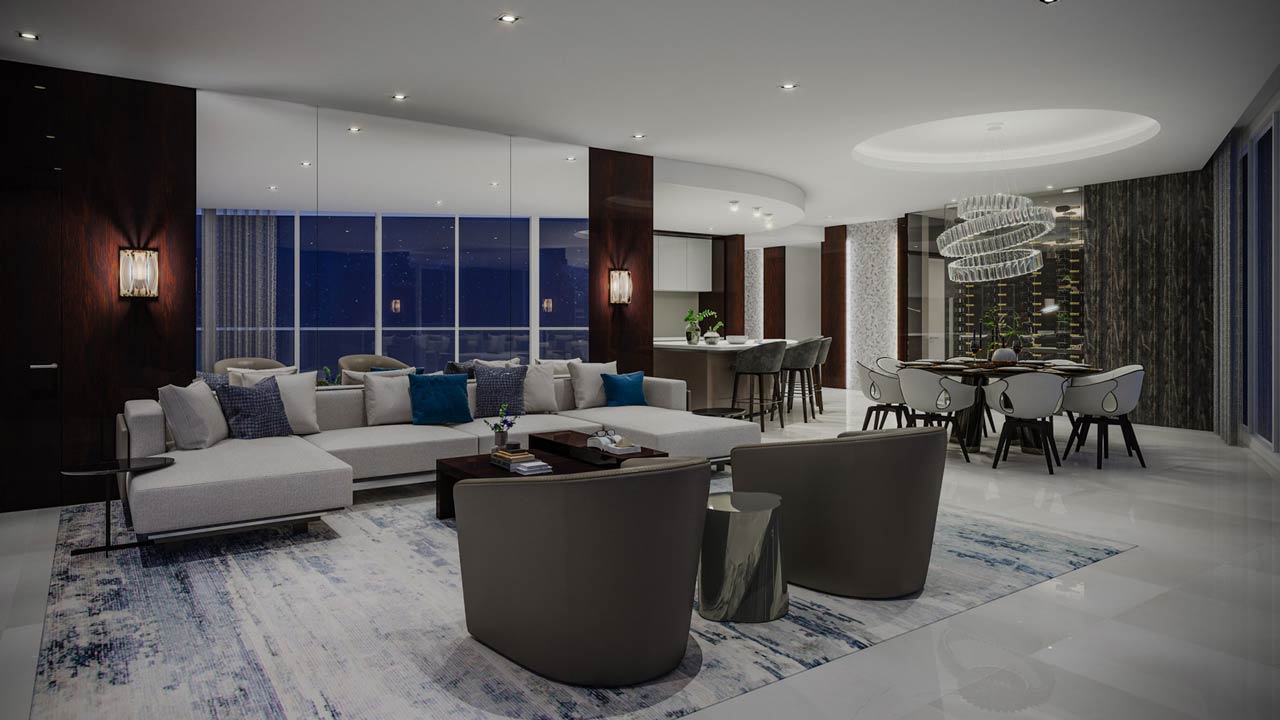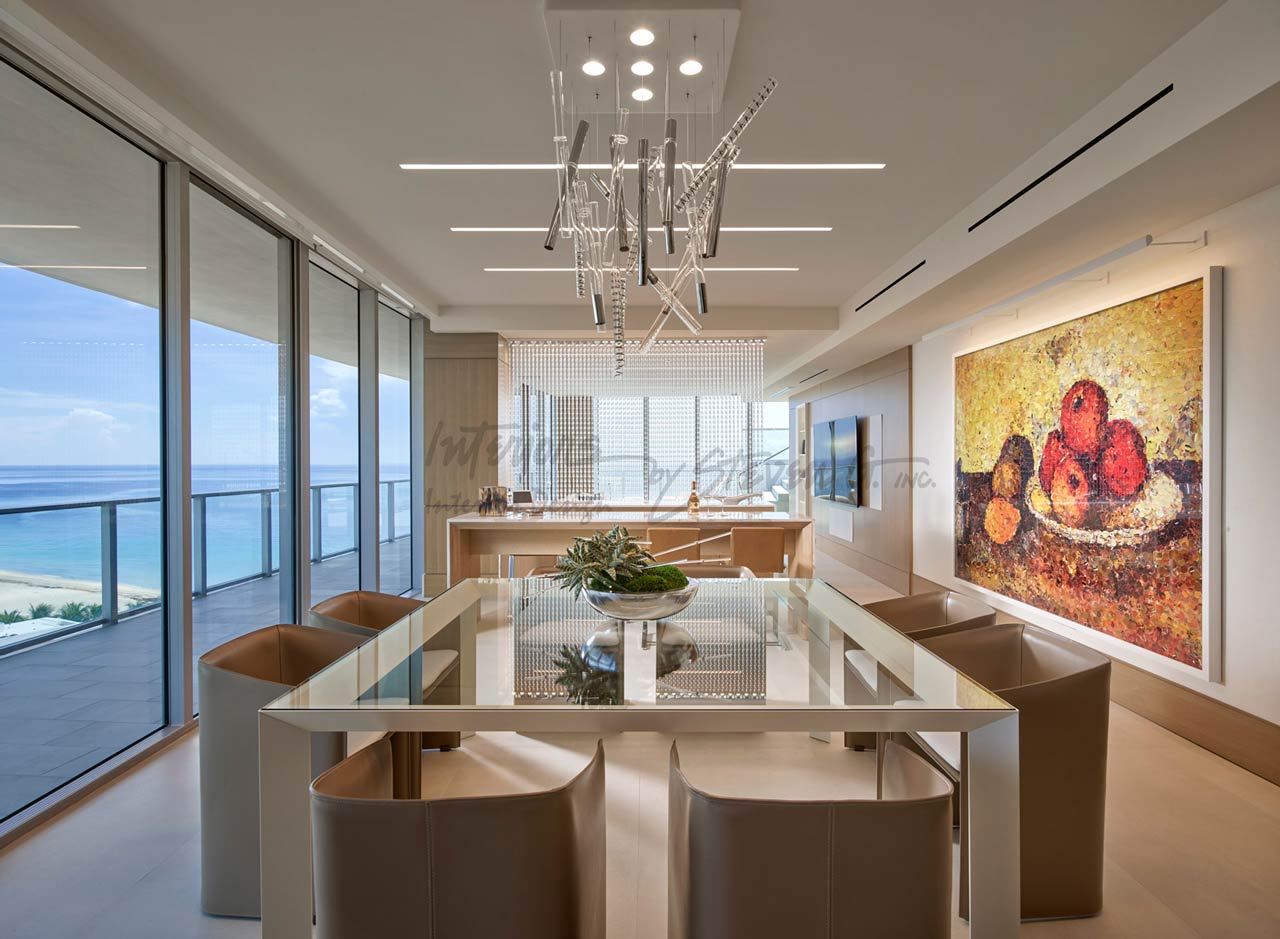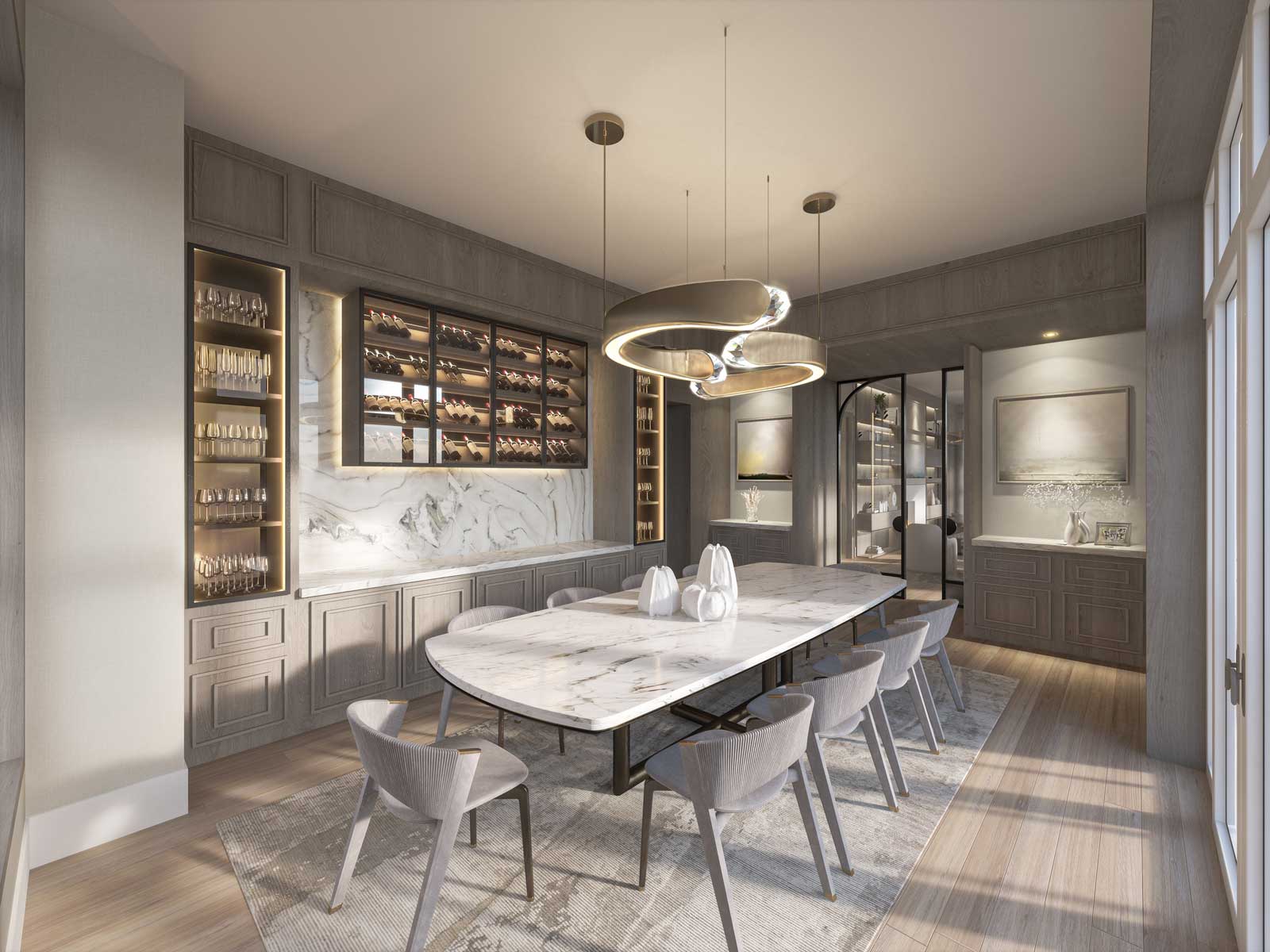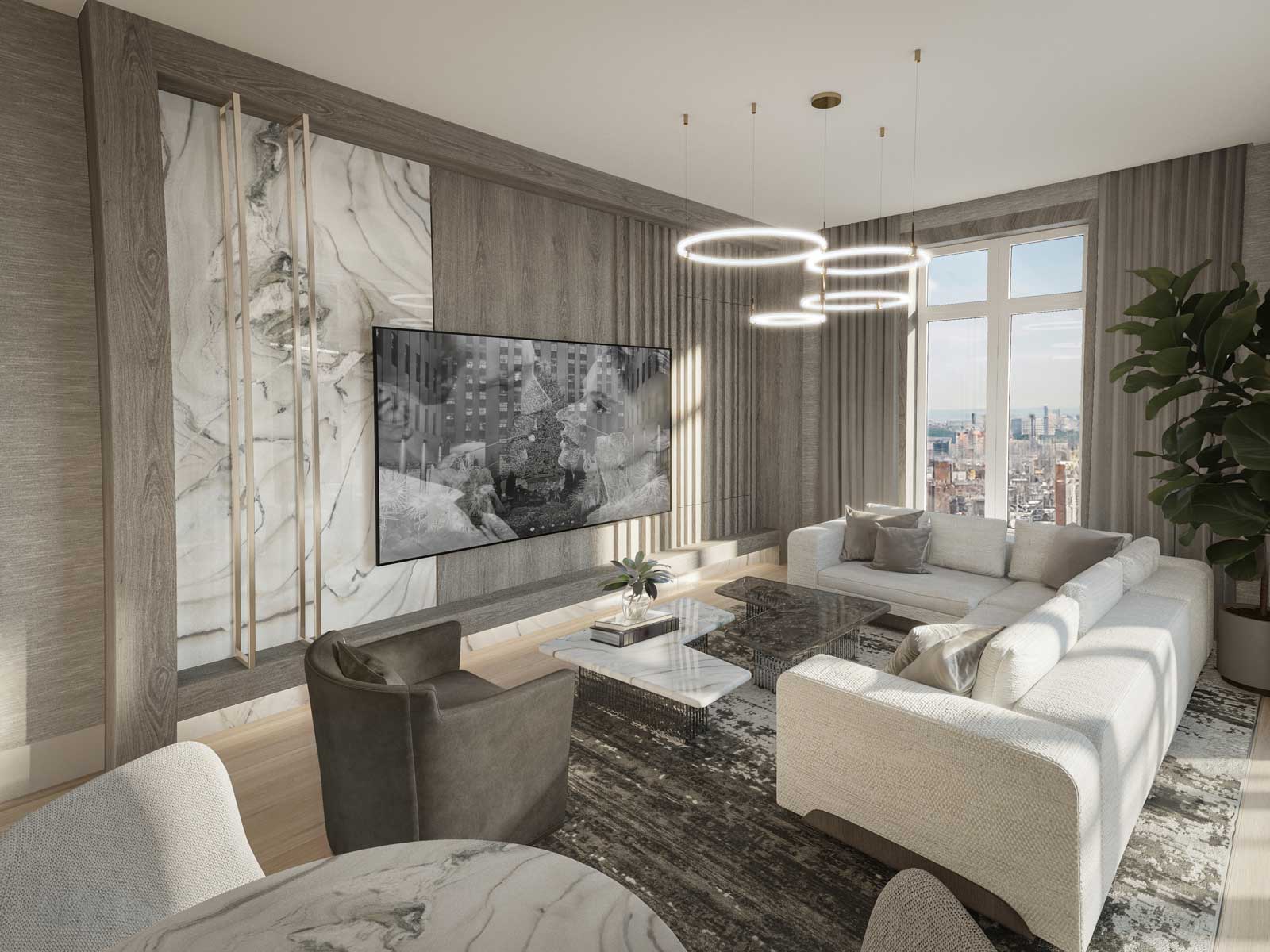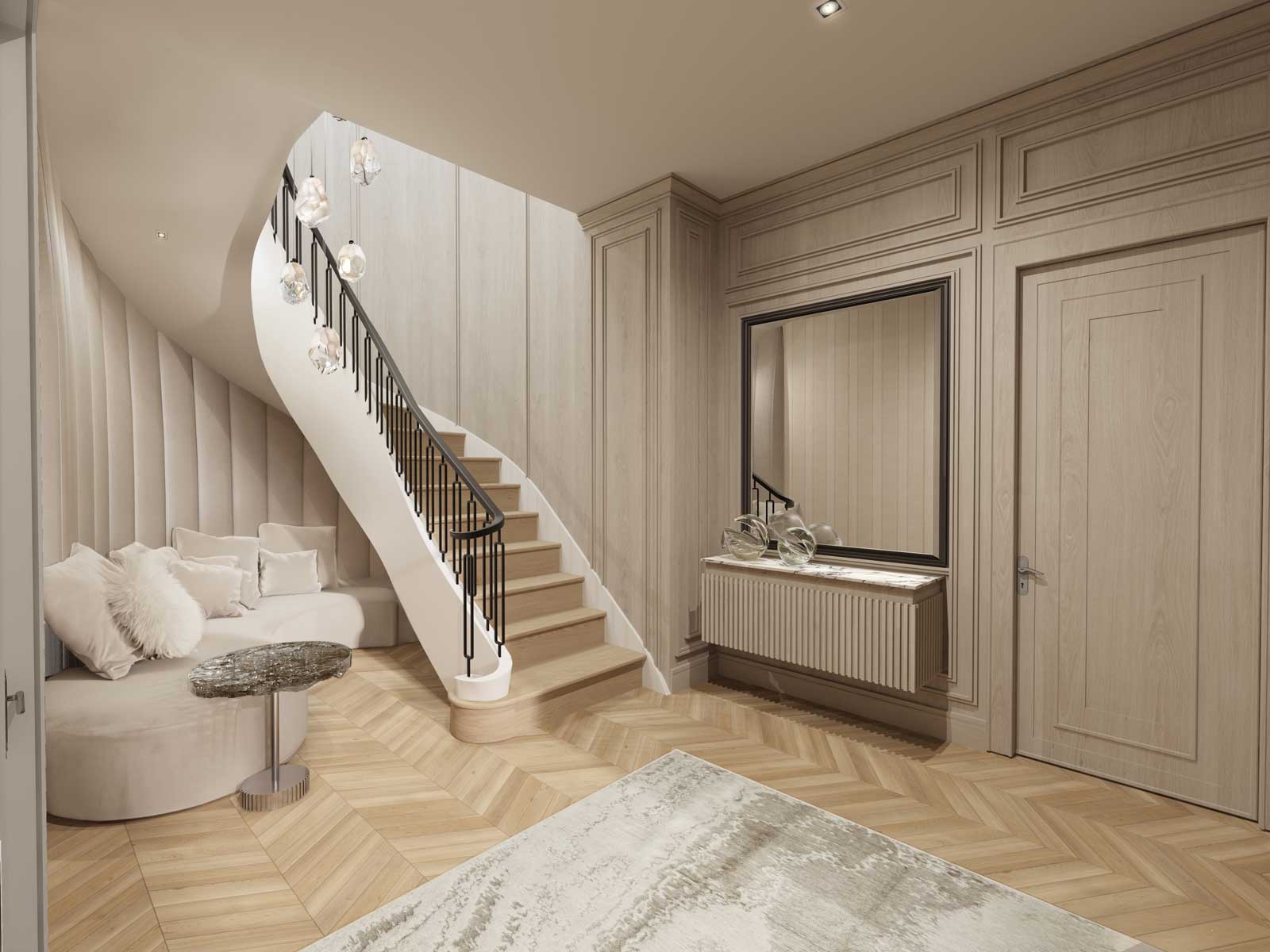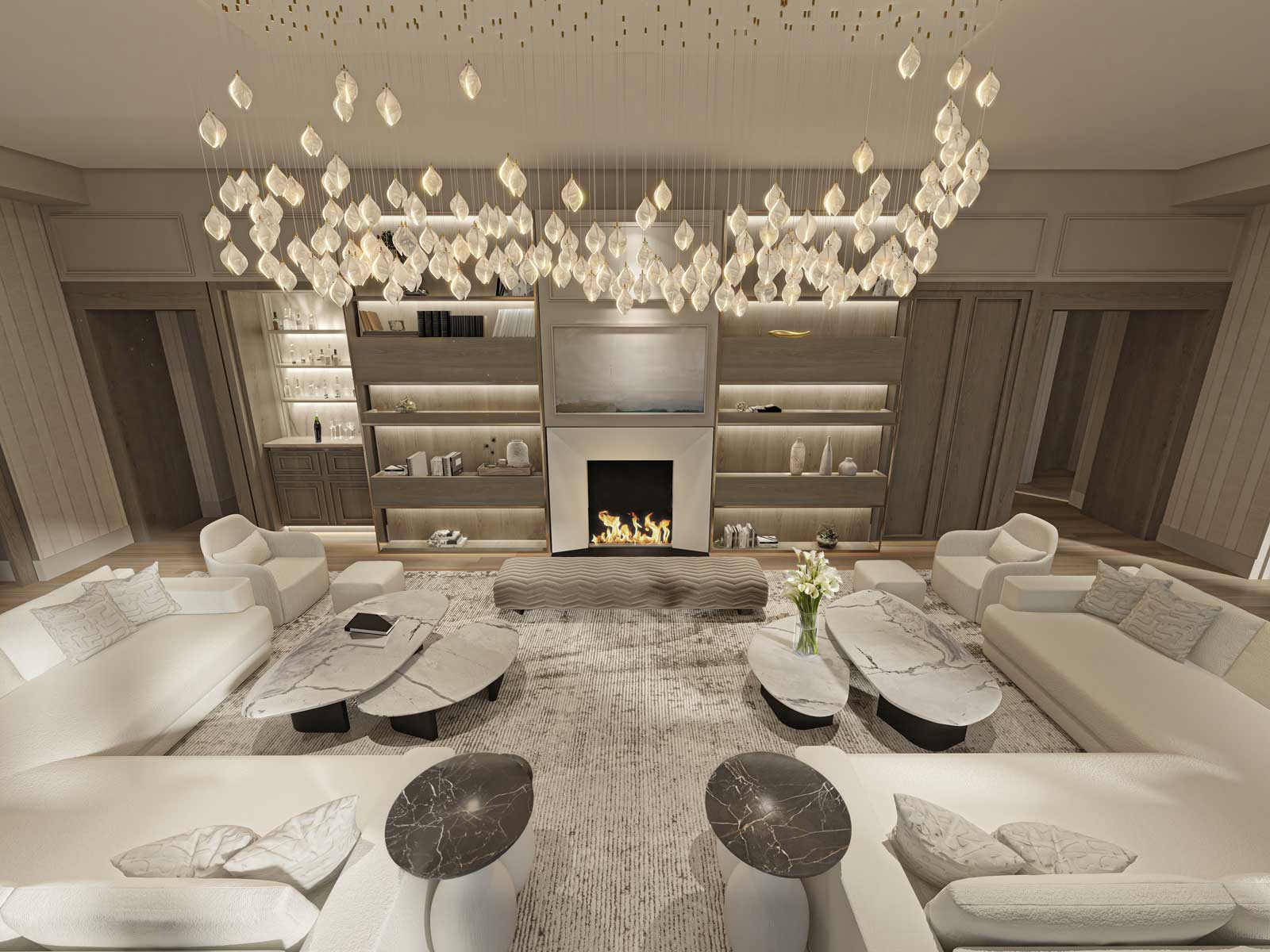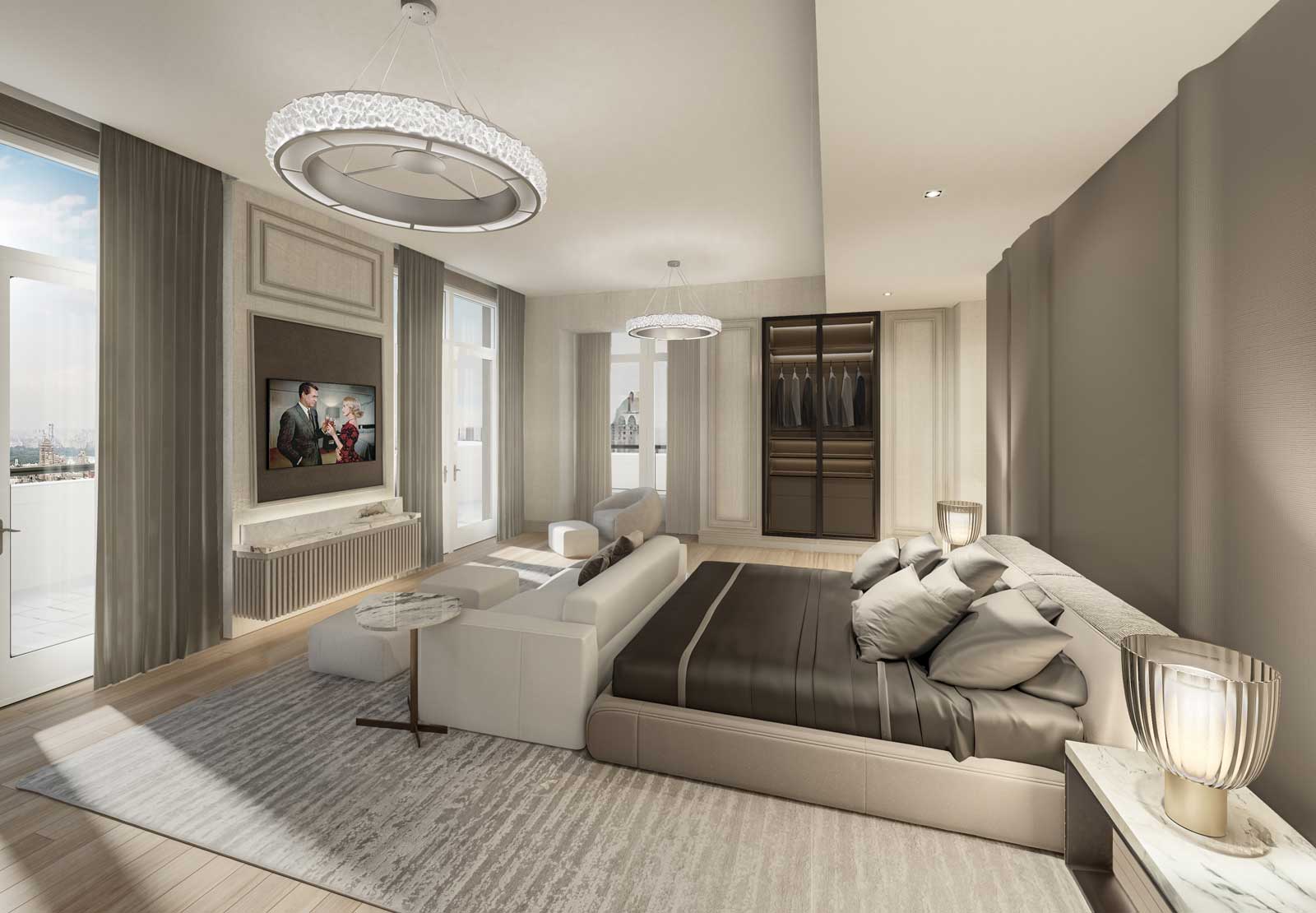Luxury interior design can be customized to incorporate eco-friendly features. You can choose from elements such as sustainable materials and energy-efficient lighting. At Interiors by Steven G. (IBSG), we can help you create a luxurious interior while remaining eco-conscious. Here are some elements to consider incorporating into your interior design:
Sustainable Materials
Sustainably sourced, recycled, or upcycled materials can have a reduced environmental impact than newly manufactured materials. Bamboo, reclaimed wood, and recycled glass are material choices that can reduce your interior design’s environmental impact. Bamboo is a renewable resource that can be used for flooring, furniture, and decorative elements. Reclaimed wood can add a touch of history and warmth to a space, and recycled glass can be transformed into stunning countertops or artistic pieces. These sustainable materials can give your home a feeling of elegance while prioritizing the environment’s health.
Energy-Efficient Lighting
Energy-efficient lighting solutions are another sustainable design choice that doesn’t compromise luxury. LED lights are one example of energy-efficient lighting. They consume significantly less energy than traditional incandescent bulbs and generally last much longer. This can help you reduce the need for frequent replacements. Smart lighting systems with motion sensors and programmable settings can enhance the luxurious feel of space and contribute to energy conservation. Integrating these technologies can reduce your carbon footprint and create a sophisticated, high-tech atmosphere within your eco-friendly home.
Natural and Organic Fabrics
Consider choosing natural and organic textiles, such as organic cotton, linen, hemp, or wool. These fabrics are generally environmentally friendly and may contribute to a healthier indoor environment. These fabrics don’t contain the harmful chemicals, like formaldehyde, used in conventional fabric production. Add handwoven organic rugs or drapes made from sustainable fibers to add a touch of refinement to your indoor space. These pieces can elevate the space’s aesthetic appeal while aligning with the principles of eco-conscious luxury design.
Low-Impact Furniture
Investing in high-quality, durable furniture made from responsibly sourced materials is a key aspect of eco-friendly luxury interior design. Look for pieces crafted from Forest Stewardship Council-certified wood or furniture companies with reputable eco-friendly certifications. Timeless furniture designs made with longevity in mind can reduce the frequency of replacement and contribute to the overall sustainability of your home’s interior. Consider purchasing vintage or antique pieces that can be restored and repurposed.
Green Walls and Indoor Plants
Green walls, also known as living walls, are made of real plants and can serve as stunning focal points while helping improve indoor air quality. Integrating indoor plants, strategically placed to complement the overall design, can add a refreshing and organic element to the space. Choose low-maintenance plants that thrive indoors and require minimal water.
Water-Conserving Fixtures
Choose water-conserving fixtures for bathrooms and kitchens to reduce water consumption without sacrificing style. Faucets, showerheads, and toilets with low-flow technology can contribute to environmental conservation while adding a modern and luxurious touch to the space. Incorporating smart water management systems that monitor and optimize water usage can further enhance the eco-friendliness of your luxury interior. This approach aligns with sustainability principles and positions your design as forward-thinking and responsible.
Recycled Art and Decor
Elevate your interior design by incorporating recycled art and decor. Unique pieces crafted from repurposed materials or found objects can be used as conversation starters and contribute to reducing waste. You can commission artists to create pieces using recycled materials to add a personalized touch to your luxury space while supporting sustainable practices. Consider sculptures made from salvaged metal or artwork created from reclaimed wood. These elements give your home a sense of individuality while reflecting a commitment to environmental responsibility. You can also shop at antique shops or estate sales for unique pieces you can recycle to use in your home.
Sustainable Paints and Finishes
Choosing eco-friendly paints and finishes is a subtle yet impactful way to contribute to sustainable luxury. Traditional paints can release harmful chemicals into the air, which may negatively affect indoor air quality. Opt for paints that have low amounts or no volatile organic compounds. These paints are safer for the environment and promote a healthier living space for you and your family. Consider finishes made from natural oils or waxes for wood surfaces. This can help you avoid toxic substances commonly found in conventional varnishes. These choices can showcase your commitment to responsible design while contributing to a luxurious and health-conscious interior.
Eco-Friendly Luxury Interior Design
At Interiors by Steven G., we work with each client to create a design that gives a luxurious feel while remaining eco-friendly. We can incorporate elements such as recycled art and decor, water-conserving fixtures, green walls, indoor plants, and more. You can help positively impact the environment by incorporating some of these design elements into your home. Contact us today to learn more about our luxury interior design and how you can use eco-friendly elements in your home.





